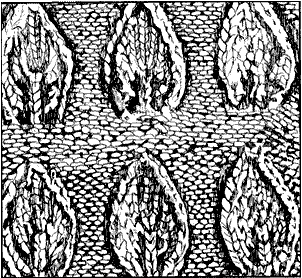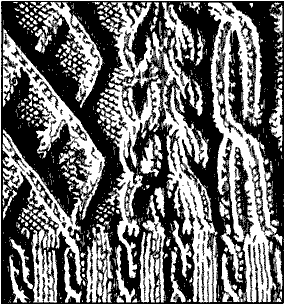
| Разделы | |||||||||||||||||||||
|---|---|---|---|---|---|---|---|---|---|---|---|---|---|---|---|---|---|---|---|---|---|
| @ Иллюстрации и Обложки | |||||||||||||||||||||
@ Книги
| |||||||||||||||||||||
| @ Планета Перн | |||||||||||||||||||||
| @ Драконы и файры | |||||||||||||||||||||
| @ Дельфины | |||||||||||||||||||||
| @ Биология | |||||||||||||||||||||
| @ Общество | |||||||||||||||||||||
| @ Родословные | |||||||||||||||||||||
| @ События | |||||||||||||||||||||
| @ Энциклопедия | |||||||||||||||||||||
| @ Улыбнитесь | |||||||||||||||||||||
| @ Гостевая книга | |||||||||||||||||||||
| last modified
23.01.2005
|
|---|
Всадники Перна. Материалы
The Dragonlovers guide to pern
X. Holds, Crafthalls, and Weyrs
INTRODUCTION
Pern's population of four to five million is divided among several major Holds and hundreds of smaller holds and isolated cotholds across the southern two-thirds of the Northern Continent and in smaller, more isolated clumps in the Southern Continent. Of five climate zones (two polar, two temperate, and one tropical), only three are inhabited. Benden, in the temperate zone, has weather much like New York. Igen and Keroon, though half in the temperate and half in the tropical zone, are mostly desert. Ista, Southern Boll, and Nerat are tropical. The climate has a major effect on the organization of each Hold.
HOLD STRUCTURE
The largest Holds have a population of no more than a thousand, forming a support system for the Lord Holder's administration and a central hub for trading and education. Many more thousands look to each of the major Holds from tiny holds and cotholds scattered throughout the countryside. The social structure is similar to that of any agrarian society. Most of the smaller holders are farmers. The typical size of a Pernese farm is ten to twenty acres. The cots are built of stone or hollowed out of the volcanic rock in a mountainside. Miners and prospectors tend also to live in isolation, bringing their discoveries to the major Hold during Gathers and festivals, or to their Crafthalls.
To save manpower hours on the larger farms, the fields are often burned off after harvest instead of being plowed under. What extra time the holders have is spent in building and repairing shelters. Burned fields are allowed to stand fallow for a Turn or so to replenish the soil. More land is farmed in Intervals than during Passes, because there is no longer a fear of losing precious crops to the sky-borne threat.
It is ironic that during the Passes, when there are more herdbeasts needed to support more dragons than are Hatched during Intervals, the crops needed to feed them are reduced to what can be easily protected by the Weyrs. The surface of the Northern Continent is approximately the size of Eurasia on Earth, and as the population grows, the farmers are running out of arable land to till. The Southern Continent is regaining its importance as the northerners, fleeing overcrowding in their home Holds, go south to open new farmholds.
Depending on availability of building stone or natural caves, a Hold may be established anywhere there is arable land. The population has grown and diminished in cycles over the Turns, growing when harvests were good and declining because of fire, starvation, disease, and Threadfall. Viruses and bacteria brought by the original colonists in their intestines surface occasionally, causing epidemic and plague.
During Threadfall, most of the population takes shelter in the isolated holds, which for that reason need to be self-sufficient. Their ancestors, the settlers who came to Pern, preferred autonomy,
and it has become inbred. To them, the best form of government is no government at all, though it is difficult to form a cohesive society with no overlying rules of conduct and nowhere to take
grievances. Over the centuries, in times when Thread has fallen, “people clung to the safety of stone walls, stout doors, and to the traditional leadership of their Lord Holders”
(The Girl Who Heard Dragons). They form survival units to stay alive, and when the crisis is over, go about their business again.
The lack of centralization is directly attributable to the original philosophic foundation of the colony, though it had to mobilize under central authority in order to protect itself and its resources when Thread started falling in the eighth year of the colony's history. Even during the Pass, they continued promoting disjointure by establishing new Holds in the Northern Continent that would thereafter enjoy the autonomy that the original Pernese colonists sought.
For the former city dwellers among them, returning to a monolithic structure such as a Hold was not so severe as it was to the surviving nomads. Most of the nomads' numbers were wiped out during
the first few Falls. The survivors gradually and reluctantly threw in their lot with the stakeholders. Under such trusted leaders as Admiral Benden and Governor Boll, the Pernese mobilized to combat
the menace of Thread to the best of their ability.
People gain status on Pern by doing what they do best. They merit honor from their activities, not from any innate nobility. The mark of a good Holder is his ability to exercise control of a Hold in times of crisis and to administer Hold business wisely at all other times. When a Lord Holder dies or retires, his heir or successor may be of no relation to him at all. What matters is that the man is able to fulfill the responsibilites he owes to the many hundreds or thousands who will look to him. Most frequently, though, an heir will be of the Blood, or a fosterling who has lived in the Hold sufficiently long to be familiar with its operation and to have gained the trust of its folk.
Older members of society are venerated for their accumulated knowledge and age and are considered to have made their contributions already. A prudent Holder will keep their needs in mind and ask their advice when he requires it. A Holder's family is his greatest administrative asset. In the major Holds, aunties and uncles, as the elderlies are called, live in separate floors devoted especially to their care. When the Holder can afford it, healers are retained to look after the aunties and uncles, but in the smaller and poorer Holds, it falls to the daughters of the Holder and others with caring and skill to tend them.
A man born on Pern will probably live anywhere from eight to eleven decades, unless something befalls him in the meantime. Normally, the oldsters are assigned to non-stress duties that will not
strain them unduly. Each of the three parts of the societal structure, Hold, Hall, and Weyr, are independent from and interdependent upon one another. A Holder cannot command a Craft-master against
his will, or deny the products of a Crafthall to other Holds. The two are considered to be of equal rank. The Master of an entire craft is equivalent to a Weyrleader or a Lord Holder. They owe one
another respect.
In a major Hold, a Lord Holder will employ a staff of craftmasters to oversee their specialties in his demesne. He hires what masters and journeymen he can afford to pay or board, depending on the level of skill he requires and the level of persuasiveness he can bring to bear against his prospective employee. A wealthy major Hold will have one or two Masterharpers and a couple of journeymen to oversee the teaching, organize interhold communications, and provide entertainment. The Holder will employ at least one Masterhealer and some apprentice healers to look after those under his care. The more elderly and infirm people in a Hold, the greater number of healers needed. Smiths of various specialties will be persuaded to set up Crafthalls in the Hold or nearby, but whether or not the Lord Holder uses their services exclusively depends on His Hold's needs.
If at any time a Holder runs short on marks, he may dismiss his Craftmasters. If a Craftmaster is dissatisfied with his position, he may resign. Grafters, like Weyrfolk, are autonomous and are not subject to the Holder's pleasure. If any man finds he is unable to tolerate his Holder, he has the option of moving elsewhere without hindrance. There is no stigma attached to disaffection.
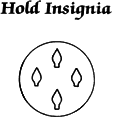
A Holder will indicate his Hold of origin by wearing a round badge displaying the heraldry of his Hold, or a shoulder knot woven with the appropriate colors and a combination of silver or gold thread to designate whether it is a major or minor Hold.
Penal System
The individual holders can appeal to the Lord Holder for justice. If a man commits a crime, the Lord Holder will most likely determine punishment to be restitution and service to the wronged party. Imprisonment is the next severest penalty, and death can be decreed for heinous crimes such as murder.
The greatest penalty a man can suffer is to be made Holdless. During an Interval, deprival of shelter does not put a man at risk as it does during a Pass, but it cuts him off from the societal structure. For an honest man to be Holdless is a severe punishment. Even death is not as frightening to a man as being without shelter during a Pass.
Psychopathy is rare on Pern. Careful screening of the original colonists made sure that any maladjusted individuals received care, and individuals diagnosed as severely maladjusted, considered incurable, were refused space in the convoy. As it was to be a small, intelligently constructed society, those with psychological needs were attended to, so problems did not feed on themselves. The authors of the Charter wanted to create as perfect a colony as possible.
CRAFT STRUCTURE
The development of specialized Crafthalls as teaching units progressed naturally from the gathered population. An active program of apprenticeship based on those used on Earth and First Centauri began immediately once the children of the colonists made landfall.
The first Craft in Landing to begin formal apprenticeship was the Healercraft, since that skill was the most vital to prolonged survival of a new colony. Such skills as first aid, midwifery, and
herbcraft were needed every day. Minecraft, Smithcraft, and Beastcraft followed closely. Fishing, weaving, and viniculture all had long-held secrets and skills that were preserved over the ages by
passing them down to new generations. Life in a colony has its dangers. The new Pernese recognized that and knew they could not risk being deprived of skilled men and women in every discipline. As
rewards for diligence, an apprentice could earn stake acres upon reaching maturity.
A craft is established by its inventors or best proponents in each Hold, who appoint Craftmasters, the recognized experts. He or she trains interested apprentices; when an apprentice reaches journeyman status, he or she is considered competent to practice the Craft independently. Thereafter, journeymen study on their own or with other Masters and journeymen to achieve mastery, while teaching new apprentices the Craft they have learned. A Mastercrafthall is established to maintain standards among the scattered Halls and to provide a school of instruction for apprentices.
Most apprenticeships last five to seven years. By that time, an apprentice will have all the on-the-job experience he needs. If he chooses to persevere in his studies, he will follow his own path, his chosen specialty, to Mastership. There are also all-around masters, but those are rare (and in time generally become the Craftmaster).
To his journeyman or master, an apprentice owes obedience. In return the master owes qualified teaching and sufficient experience for the apprentice or journeyman to pass the oral and practical proficiency exams and advance in his Craft. The student is given ample opportunity to demonstrate what he knows. Advancement in grade is called “walking the tables,” from the practice of seating each rank at a separate table in the common dining hall. When an apprentice or journeyman is advanced a rank, the ceremony often occurs at a meal or other assembly, at which time the honoree takes his place at his new table.
Crafthall Insignia
A crafter shows his rank by the use of shoulder cords. The most elaborate design is worn by the Craftmaster, knotted from the craft colors. Those below him wear simpler knots that will also indicate by which Hold they are employed (if they work outside the Master-Crafthall). A crafter will wear a roundel badge that shows by its symbol to which Craft he or she belongs.
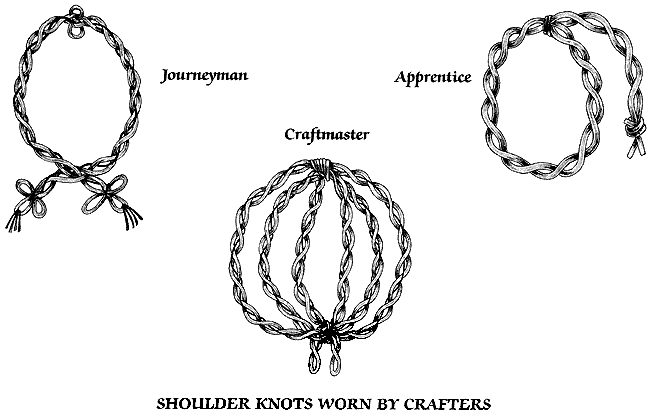
Women in the Crafts
Women in the Crafts are accorded respect equal to that given men of equal ability. Opportunities for them are not as limited as in a Hold, where they are expected to bear as many children as possible while keeping up with their other duties.
The simple fact that women have to bear the babies, because men cannot, led naturally to the establishment of a fostering system to keep trained women in the work force. Women and men who had the knack of child care were given the duties of seeing to the daily needs of the children of others as well as their own in Weyr, Hold, and Hall. A mother could have her baby and, after the first three months of primary care, turn it over to a foster mother whom she trusted. Such a practice left women free to pursue their craft without having to worry about their offspring.
Menolly, of the Harper Hall, has four children whom she fosters with Silvina, the Halls headwoman. Menolly's talents are needed elsewhere, and her inclination has never been toward child rearing.
The gradual decline in the number of female apprentices and journeywomen stemmed from the Great Plague. As women had to produce more and more babies to replenish the population, females fell away from the Crafts, until it was forgotten except in the record hides that they had ever been equal members. The push to increase the population got out of hand, and some Crafts had no women in them for nearly four hundred Turns. Menolly is merely the first journeywoman in the Harper Hall after a long time, not the first ever. A Historical Saga tells the story of a journeywoman who married a Lord Holder of Ista, who was so proud of his wife's prowess that he built a Harpercrafthall for her in his Hold.
| |||||||||||||||||||||||||||||||||||||||||||
The reinstitution of women has been as gradual as the decline. As those with strong wills and skilled hands showed that they were as adept as the men, they began to join the Healercraft, the Weavercraft, the Smithcraft, and the Minecraft. Ironically, it is the Harpercraft, the Craft that deals with communication and fresh ideas, that has had the most protracted absence of female crafters.
MEANS OF EXCHANGE
The usual method of exchanging goods or services is barter. A man will trade his skill or merchandise for that of another, usually at a Gather. Gathers, Hold-sponsored fairs, are held as frequently as once every seven days in major Holds, or as infrequently as two to three times a Turn in smaller, more isolated holds.
The unit of monetary exchange is the mark. These are disks made of wood, supplied as blanks by Lemos Hold and stamped with special dies that denote value and source. The value of the mark fluctuates with supply of barterable goods. After a bad harvest, a mark is worth more because the goods it represents are harder to obtain; after a good harvest, the situation is reversed. This fiscal autonomy is set by a group of traders, Craft-masters, and Lord Holders that meet every year at harvest time to fix what a mark will buy for the next Turn. In a good Turn, an ornamental belt will cost two marks.
Each major Hall and Hold has its own die stamps for impressing marks. The denominations are 1/32 of a mark, 1/16, 1/8, 1/4, 1/2, 1, 2, 5, 10 marks, and a few 100 mark pieces for very large transactions. For fractional marks, only one number is stamped on the blank. A horizontal line above the number shows that it is worth less than one mark. If the line is below the number, the piece is worth that number of whole marks. The designs on marks are very complex and hard to duplicate without the correct tools, which the Smithcraft provides. An imperfection is consciously added to every imprinting to make them even harder to counterfeit.
Only so many marks are issued per Turn, to balance the supply of goods or to replace old, worn-out mark pieces.
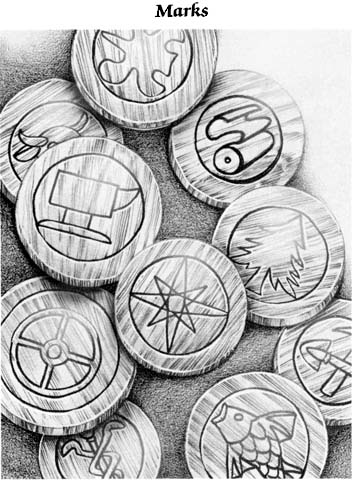
Musical instruments sell for prices from two marks and up. Runnerbeasts can be had from nine marks up, and their riding gear from three marks for used leathers to more than twelve for custom gear for a Lord Holder's steed.
HIGH REACHES HOLD
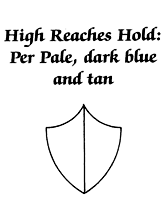
High Reaches Hold is windy and bleak, though it is saved from the worst weather by a neighboring ocean current, even if that current is cold. The traveling gulf stream, which makes its way around the entire northern hemisphere of the great ocean of Pern, begins its southward journey just north of High Reaches.
High Reaches merits the dubious distinction of having spawned Fax. Fax was a younger son of a cadet branch of the Blood, born in the last decades before the Ninth Pass. He considered the main bloodline too effeminate, too dilute, and began to take over where and when he could. With his host of dissatisfied jolly boys, he slew the Lord Holder and his family. Numb with shock, no one put up a fight or otherwise tried to stop him. A Holder had only a ceremonial guard on hand, not a standing army. The family was defenseless. In any case, he had blocked off their every escape route. In his own twisted way he was a top military strategist.
Every move in his conquest was unspeakable by civilized standards. To keep his actions secret, he sequestered the Hold harpers and refused to allow itinerant singers to enter the Hold. Harpers were in a precarious position in Fax's day. It was still twenty Turns before the end of the Long Interval, and their duty was to teach Hold children what they owed to dragons and dragon-riders, whom most holders would as soon have forgotten as useless parasites. Because they served as a reminder of the Weyr, harpers themselves were often considered useless parasites. It was actually the tradition of immunity that kept a harper safe much of the time. Their Craft was still needed after the 250 Turns since Thread should have fallen, because the harpers were the best communication system the Holds had.
Once he was in complete control of the Hold, Fax released the High Reaches harpers but left them so terrified that they could not tell anyone else what was going on. He took pleasure in his knowledge that whoever they did manage to tell would not believe them, since what he was doing had never happened in all of the history of Pern.
After conquering High Reaches, he married Gemma of Crom, adding that Hold to his territory. He conquered Nabol in much the same way as his home Hold and murdered the Holders of three lesser holds. His host of strongarm men, now swelled to an army, knocked holders about as they pleased. Fax's final acquisition was Ruatha. He craved it because it was rich and had the finest bloodstock of runnerbeasts on Pern. He had the runnerbeasts moved from Ruatha after Lord Holder Micawl's family was dead—all but Lessa of Ruatha, who was warned of the impending invasion and fled to the Watch-wher's den for safety.
When Fax was killed, his army was quickly disbanded and went back to being hunters, fishermen, and farmers. There is no doubt that a strong arm can be useful in settling a brawl, but a force such
as Fax commanded went against everything the people of Pern believed in. Having the autonomous Holds united under a tyrant was precisely what the colonists had set out to avoid when they came to Pern
in the first place.
Since Fax's death, High Reaches Hold has been in the capable hands of Lord Holder Bargen. Because of the extremely cold weather, the folk in High Reaches learn survival techniques early and drill their children until they follow the rules without thinking.
The Hold is burrowed deep into the mountain, with only a few shuttered windows overlooking the rows of cotholds that line the river road. But for a few smaller holds, High Reaches is well isolated on its westward-jutting peninsula. Its Weavercrafthall is unusually skilled. The weavers shear the llamas that High Reaches uses as pack animals; the hair is woven into an unusually fine and soft, warm cloth. Lord Lytol of Ruatha spent many Turns here as a Mas-terweaver between the time he left the Weyr after his dragon's death and when he moved to Ruatha to care for the infant Lord Jaxom. High Reaches has several minor Crafthalls, including a glass-smith's shop, which, besides the usual custom necessary for a Hold's operation, does quite a good business in bottles and jugs.

Fortified wines are a popular drink here, more so than in Holds farther south. Fruit brandies such as pear, apple, and blackberry are prepared against the long, cold season. High Reaches imports a lot of spices for preserving meat and fish, and for mulling wines.
The knitters in High Reaches practice the art of felting, a Craft they share with Southern Boll, though anyone can tell the difference between holder-made and Craft-made goods. As a rule, High Reaches holders use their skill for gloves, sweaters, heavy skirts, and trousers to go under weatherproof hide. The tropical Weavercraft puts its skill to lighter work, such as felt hats and decorative slippers for ladies. Felting obscures the careful knit stitches of the heavy fleece sweaters, but renders the fabric much warmer and less likely to catch hook or barb casually. Being less permeable, felted knits also last longer. In order that a High Reaches “gansie,” or sea-mans sweater, can be easily distinguished, the knitters use the old star-and-egg Fair Isle pattern brought from Earth by the colonists. The sweaters are often brilliantly colored, predominantly made in tan and blue, the Hold colors, but banded with bright gold and red dyes made from lichen for greater visibility.
High Reaches is also well-known for its skill at shipbuilding, second only to Tillek Hold. The holders bend timbers and dress wood in the waters north of the Hold and ship numbered and measured lengths of seasoned wood from the flat oval caverns under the Hold intended for assembly elsewhere. During much of the year, the bay is scoured clean of sand and weed by the icy northern waters, leaving it deep and clear, safe for any ship that comes so far north.
HIGH REACHES WEYR

High Reaches was the third Weyr, founded entirely by dragons and riders from Fort Weyr. After the First Pass ended, the queens kept laying good-sized clutches for a while. There were no deaths from Threadscore or misadventure, so the population quickly rose to a squeeze in the available living space. The volcanic caldera in High Reaches was handy.
High Reaches is one of the most striking of all the Weyrs. The north rim of the Bowl is called the Seven Spindles for the high, crownlike points arrayed around that end, formed of old flow from the volcano and clipped to sharp spikes when the caldera blew up in ages past. The Hatching Ground is in a wide, high, oval cavern at the northernmost edge of the Bowl next to the queens' weyrs.
Like Fort and Benden, High Reaches was hollowed out with stonecutters. Some thermal baths were put in in the queens' caverns and the Weyrleader's chamber, but most sanitary and bathing facilities in this and all later Weyrs were supplied with exterior pipes of ceramics or metal.
Most of the Oldtimers who came forward to High Reaches left for Southern Weyr after the death of Weyrleader T'kul, leaving Kylara and T'bor, formerly of Southern, as the new Weyrleaders. When the two queen dragons died, Pilgra became Weyrwoman for Segrith. T'bor, though brash and occasionally thoughtless, is entirely behind the Benden Weyr leadership.
BALEN HOLD
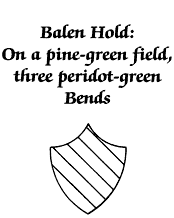
Balen is a small sea hold on the north side of the peninsula west of High Reaches. Balen is famous for its lumber mills, which saw timbers from High Reaches and its own pine forests into boards. Balen, too, has numerous caverns in which wood is seasoned for building. Skilled wood-smiths here make furniture, as well as fixtures for ships.
TILLEK HOLD
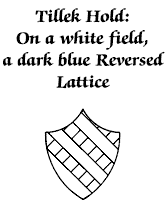
Named for James Tillek, captain of the colony ship Bahrain, this is the most westerly major Hold in the Northern Continent. Tillek and the dolphineers founded this Hold with their stake acres after the Second Crossing. With the aid of the dolphins, the seagoing population of this stakehold charted the currents and coasts. Tillek is known for its conifer forests (which have grown up in the Long Interval), its terraced farms, the Fishercrafthall, shipbuilding, and its wine.
Tillek's population is seasonal, depending on how many ships are in harbor. As most of the men tend to be involved in shipboard activities, Lord Oterel places many women in positions of authority. The hardiness of Tillek Hold women is legendary. Having himself done a fair number of Turns on the sea, Lord Oterel understands the needs of administration both on ship and on land. His Lady Steward is his wife's sister, Bron-wen. She is a good organizer and sees that the Hold runs well and on schedule. Timeliness, particularly with regard to meals, is a crucial issue when so many need to leave the Hold in the predawn hours to catch the tides. Bron-wen's husband, Captain Ekito, is away much of the year on fishing trips, and her many children are fostered with other women in the Hold, as Bronwen has much to do.

Bronwen works closely with Cytor, Portmaster of Tillek Sea Hold. Cytor is a retired sea captain who knows the ropes and can handle the rough seamen who use the Sea Hold as their base. The wharf is built of great heavy blocks, right into the harbor, which is good and deep but sheltered from the elements. From the Sea Hold, a ship can pick up the southern current and move with surprising speed down the west coast of the continent toward Southern Boll and east beyond it to Ista.
There was little flat land for farming when the first holders came here, since the primary interest in Tillek was its sheltered harbor to the northwest of what is now the Hold. The holders
gradually built terraces into the mountain that held the Hold, giving the broad farms a northeastern exposure. The roads leading to the Hold proper were also terraced, with ramps built for wagons
along either side.
The Tillek Gather meadow occupies the steppe nearest the entrance to the Hold. This allows the traders to take best advantage of the roads when hauling or driving their goods to the pitches arranged at the meadow's perimeter.
Tillek harvests lumber from its extensive conifer forests during the warm weather, and lays it down in dry caverns to season, often for a full Turn. Much of this wood is shipped to other ports, but some of it stays in the Hold for the shipwrights' use.
During the cold season, the wood-smiths of Tillek preassemble aged wood for shipment and dress wood to be used by the shipwrights as soon as the weather breaks. The shipbuilders' cavern is high and wide, suitable for bending timbers with complete disregard for the weather outside.
| ||||||||||||||||||||||||||||||||||||||||||||
A much-practiced skill in Tillek during storms and bad weather is knitting. Mothers teach their fosterlings the skill from the time they can hold the needles, and gradually introduce them to stitches and patterns of greater complexity and intricacy. On a typical evening, the men will gather to mend nets or knit, using the same skills for different applications. Beginners make socks and caps, which are frequently unraveled later to save precious yarn. Skilled knitters may use multiple pairs of needles and several strands of yarn at once.
Like all the Sea Holds, Tillek fishermen use a specific stitch pattern to denote port of origin. Tillek seaholders wear a trellis stitch in which the Hold symbol can be easily rendered. It is often dyed in the Hold colors: white and blue from the fields of meadowsweet flowers that grow in the nearby mountain valleys. But it shows up as frequently in the distinctive single-colored raised knit pattern, combined with a traveling cable and double moss stitch. The sturdy, nearly waterproof sweaters and jerseys serve to protect the man wearing them from the elements, but also to identify him if his body is washed ashore. The seamen are very matter-of-fact about the dangers of their craft. They may make jokes about other unlucky fishermen, but they respect the seas of Pern.
Traders compete to get the most skilled work of the knitters to take with them on their travel routes to the temperate Holds, especially those closest to the snowy wastes. These are done in colors other than those reserved for the Hold fishermen. Naolbindning mittens, incredibly warm, harder-wearing than knit, and more flexible in cold and wet than hide, fetch a handsome price. The ancient secrets of their making are not for sale. Some brocade knitting is done here, but it cannot compete with the delicate brocades of Fort Hold.
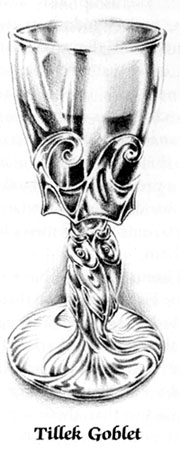
Anyone who has tasted the products of either Hold has heard of the rivalry between the Benden and Tillek wine caverns. Benden wines continue to be the most sought after on Pern, with Tillek's running a distant second. The current Tillek Winecraftmaster's name is Dikson, a rangy, redheaded fellow with a nose and cheeks the same color as his best red wines. Tillek's wines are considered to be a bit foxy, and tend to have a harsh aftertaste. Some attribute this to the acidity of the soil. Even after hundreds of Turns, and improvements made in the Craft, Tillek has been unable to equal Benden's reputation for smoothness. Dikson, like his predecessors, uses the finest wood casks, which have been improved by the incorporation of the new hardwoods growing in Lemos and Igen; only the finest woven cloth is used for straining. Lime, to sweeten the soil, has been carefully dug in around the roots of ancient vines as thick as a man's body, but all to no avail. Dikson has sent spies to Bender Hold's Wine-craftmaster as apprentices, but he has never received any information that helps him.
Dikson initiated a dry red wine that has evolved quite a following among seamen, who like a hearty drink they can taste through the salt water. His white wines are only fair compared to those of some of his predecessors, like Vilbrian, his own master. A Vilbrian 12 (indicating the twelfth Turn of Vilbrian's pressings) is considered to be “… almost, almost as good as a Benden white.” Though loyalists always add, “of an inferior Turn.”
Fishercrafthall

This Tillek-based craft comprises several specialties under the aegis of Idarolan, the Masterfisher. Under Idarolan there are Master captains and Mastercraftsmen; and under them are the captains, who rate their journeyman seamen according to tradition: seaman able-bodied, second mate, first mate. Apprentices act as cabin boys and lure tiers.
Shipbuilding includes construction and maintenance of boats, improvements on lines and sheets, and learning to choose materials for sails. Seamanship also involves basic navigation, understanding of the wind and sea currents, and the study of individual coastlines, underwater reefs in southern waters, and navigable rivers. Journeymen are taught to make maps of the generally accepted trade routes and the locations of the moorings best sheltered from the wind. Chart making is a precise craft, and only those who have fair hands as copyists are trusted to make charts, since many men's lives will depend on them.
Very accurate charts have been handed down to the Fishercraft from their remote ancestors. Modern seamen have ceased to wonder how the Archive charts of the coastal waters are so incredibly accurate and detailed, and are just grateful that they are so. The knowledge that these are original fax pictures taken by the atmospheric probes has been lost since Moreta's day, when the Masterfisher succumbed to the plague, as did so many of his crafters. All that an apprentice today knows is that he had better copy those charts correctly.
Any sea captain will want to have charts with him of his own copying, and keeps archives of sailing dates and cargo carried on board his ship. In the Seacrafthold, a treasured artifact is an antique map reputed to have been drawn by the first Craftmaster (Jim Tillek) and dates from before the Crossing. (The fact that the journey from Earth to Pern over twenty-eight hundred Turns before was also called the Crossing has long since been forgotten.)
The Seacrafthold's archives helped to solve the mystery of Threadfall after the Long Interval as Weyrleader F'lar was able to study the number of clear sailing days the sea captains had reported during the previous Pass.
It is easy to learn the basics of fishing. Apprentices start off tying lures, coiling ropes, scrubbing and polishing ship's wood and brass, and repairing nets. The journeymen do most of the actual work of fishing aboard a boat. They set the nets and haul in the catch, and both journeymen and their apprentices have the messy job of cleaning the fish. A Masterfisher knows how to judge where and when a good run of fish will appear, and will captain a crew to go and bring in the catch. All year round the women, children, and apprentices dry fish to store for use over the long, cold winter.
In a skiff, a journeyman teaches an apprentice how to work with the equipment, tend sail, and use cast nets and drag nets. The rocky coasts abound with shore-hugging fish that are easily caught from small boats.
Master Mactavis, the shipcraftmaster of Tillek, is a perfectionist. He prides himself that every man in every crew he oversees is an unexcelled specialist. If they do not live up to expectation, he gives them the sharp edge of his tongue while pointing out their mistakes. “The lives of men depend on you” is his favorite reminder. “Who knows what storms she'll be in?” is another.
The personality of each man working on a ship needs to dovetail as well with his mates' as his skill does, for the crew that builds a ship usually sails her as well. This way, the crew know the ship, every ring, spar, and board of her, before she hits the water, saving precious sevendays that would otherwise be spent learning the vessel and her quirks. Their own lives thus depend upon their own work.
The wood is chosen carefully from available stores. Sailmakers, sheet makers, and chandlers custom-outfit new ships or make replacement goods for existing craft. Tar and pitch come either from Tillek's or nearby High Reaches' conifer forests.
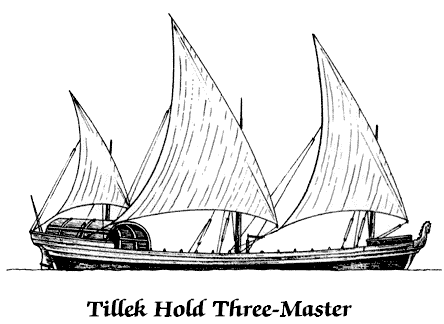
During an Interval they can make ships on the beach, but when Thread falls, they move indoors. The cavern in which they build ships is high, with a slip for sliding the finished ship into water.
Prior to a Pass, all ships that are not prepared are brought into drydock for refitting. Pumps already exist in a ship's belly for bailing the hull, but during a Pass, the pumps are used for flooding
the deck during Threadfall. Ceramic joints are used instead of wooden ones, which would be eaten off by Thread. A thin layer of lead is hammered around the mast and spars, and a canopy of metal is
kept aboard to be drawn over the exposed parts of the ship as it passes through the Leading Edge of the Fall. Standard procedure is to unship the sails, draw the canopy and flood the deck, and sail
straight into the Fall toward Following Edge. A ship is not vulnerable for long in the midst of the sea, but it is terrifying even for brave men.
Dolphins, which are respected as another intelligent species, still exist in the seas of Pern, but no one seeks them out. The sea-crafters are taught not to bother them, and if ever a fishing crew catches a dolphin by accident, they let it go with apologies. They know that the dolphins have always been allowed the freedom of the seas, and they never eat them. Over the generations dolphins have tried to reestablish communication with humans, but the dolphineers are all long dead. No one else knows the language, though the dolphins still occasionally help becalmed or wrecked seamen. Most of the original dolphineers in the crossing came to Tillek or Ista, but they had very few apprentices—during that first Pass, not many had the time free to take up that kind of skill. The last trained dolphineer died less than a hundred years after the Landing.
NABOL HOLD
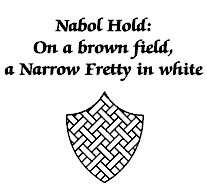
The name Nabol has long been associated with greed. “As grasping as a Nabolese,” a trader will say about a man who drives an unpleasantly sharp bargain. The man for whom the Hold was named, Nabhi Nabol, was one of the pilots who made a daring attempt to retrieve samples of Thread spores from outside the atmosphere—but for a price.
In exchange for a stakehold of the whole Big Island, which Avril Bitra had proved to him was rich in gem minerals, Nabol volunteered to pilot a gig into the cometlike Oort trail following the
plutonic Red Star. He and Bart Lemos were killed when making atmospheric reentry. The samples and data were lost, and with them the colony's last hope of destroying the spores at the source. Other
needs were more pressing, and the project to study Threadspores was set aside.
The road to Nabol Hold ends at a ramp that leads up to a gate; the corner gatehouse was built by Fax to repel attacks from any other force, though none existed in Pern but his own. The courtyard is large and paved with a pattern of flagstones. A Watch-wher lives in a den in the corner farthest from the Hold's entrance. The Hold is carved into a mountain face that has under it a low, hollow overhang that is used as an entryway. It was first used for sheltering beasts in times of Threadfall.
The Gather meadow in the Hold's shadow shares the same source of pure mountain water. There are few stalls to be had, as if the Crafthalls and others with goods to sell prefer to go elsewhere, and the Hold does not care whether or not they come. The wine usually comes from Tillek or Southern Boll, so drinkers cannot be too choosy in their tippling.
Nabol has a three-cornered courtyard with the main entrance at one end and a kitchen courtyard surrounded by walls carved out of the cliff face at the other. The main entrance leads into the Great Hall. At the south end of the huge chamber are stairs leading up to the Lord Holder's apartment and into the Inner Hold.
The Lord Holder's apartment consists of four large rooms, each with tall shuttered windows facing obliquely toward the east. Each pane of glass is clear, a sample of expert glasscrafting; the choice of clear glass suggests that the Lord Holder who installed them mistrusted his people too much to obscure any part of his view with colored panes. A wide, curving stone hearth between the windows in the sleeping room helps retain the heat in the cold mountain air.
Narrow ramps carved into bubbles in the volcanic rock join the lower chambers with the entry way and the refectory hall, and a steep stairway on the north side of the Great Hall allows access to the Lord Holders chambers. The kitchen is large, with two sets of ovens and five spit-runs for roasting whole herdbeasts.
Along the main hallway past the kitchen are the stairs to the lower level and the glow room. An ancillary hallway leads off to a row of locked storerooms. Out the kitchen door to the left is the ashpit, set as far as possible from the main Hold door.
The current Lord Holder is a man named Deckter, a remote relative of the last Lord and one believed to break the pattern of dishonest and grasping leaders in Nabols history.
Meron of Nabol, the unlamented Lord who preceded Deckter, managed in only a few Turns to make himself nearly as notorious as Fax. He was not of Lord Holder's
Blood, but served as Fax's steward and was quick enough to step into his dead Master's place. The other Lord Holders took their time confirming him in his rank, but they let him pass when other concerns required their attention. Thread had begun to fall, and the Weyr was again rising to prominence.
Meron was responsible in part for the deaths of two queen dragons, Prideth and Wirenth, in High Reaches Weyr. Both queen riders survived, but Kylara, Meron's mistress, was left mindless. Wirenth's rider, Brekke, was prevented from suicide through the efforts of Manora and F'nor of Benden.
Meron further demonstrated his contempt for dragonkind by trying to coerce his Impressed bronze fire lizard to go between to the Red Star even before the Weyrleaders had had a chance to decide if it safe to do so. Against the better interests of the northern Lords and Weyrleaders, he continued illicit trading with the Oldtimers in the South, and traded green fire lizard eggs for valuable goods, thereby tricking his vendors, whom he considered gullible enough to believe they were getting good value.
His last act of malicious interference, on his deathbed, was to refuse to name an heir to Nabol, hoping to throw the Hold into confusion after he died. However, under coercion he named Deckter, a
grand-nephew, who he believed would displease his tormentors. Lord Deckter was, in fact, the choice hoped for by the other Lord Holders and the Harper Hall.
Nabol has rich grasslands, on which the Nabolese raise ovines and domestic wherries. Like Lemos and upper Telgar, Nabol is experimenting in forestry to propagate the valuable and sought-after pine, ash, and other softwoods for furniture. Willow trees grow along the river flowing through the Es-vay Valley, and lavender and mustard do well on the slopes nearby. The sandy soil is also suitable for tubers and root vegetables, and salad vegetables of all kinds: celery, bras-sicae, greens, and fingerroots (carrots). Some wine grapes grow on the slopes, but Nabolese also have a taste for pressed cider, which they make from their own apples, an innovation begun by the Holder whom Fax deposed. That Lord had cultivated the orchards planted by a Nabol Lord many generations back, in an effort to create another marketable product.
RUATHA HOLD

Ruatha, the second oldest Hold in the Northern Continent, has given Pern many of its most famous Weyrwomen. It is also the breeding place of the finest runnerbeasts on Pern.
At the time Ruatha was first inhabited, Fort Hold had reached the bursting point with all the former inhabitants of the Southern Continent. Ruathas lovely valley and cave system was only two days ride on horseback from Fort Hold, and its grass flats and portageable river were suitable for raising food animals and transporting them elsewhere easily. Red Hanrahan, who first called the stakehold Redsford Hold for the fast-flowing river between it and Fort, elected to move into the new Hold with his family. In time, the Hold's name was translated to the Irish for Reds Ford, “Rua Atha,” by one of Red's grandsons. The saying came to be known that “Fort Hold just happened, but Ruatha was planned.” It was designed to be expanded as need arose.
Red Hanrahan was a veterinarian with an uncanny way with animals. Between the dragons and the herd beasts, Fort Hold had become too crowded for the breeding of healthy beasts, Red moved his half of
the problem to Ruatha, where he was able to allow the beasts to multiply rapidly, sometimes producing three lambs at a time out of a single ewe. The meat was desperately needed by the Fort Holders.
With the help of the dragonriders, the beasts were rounded up and herded into the caverns. Refrigeration was still possible, so the meat was frozen as soon as it was slaughtered. Dressed meat went
downstream past what is now Ruatha River Hold, south to the Fort Hold water, and upstream. Vegetables and fruit raised in the hydroponics tanks at Fort Hold went back to Ruatha, balancing out the
beast-holders' diet.
Red and his family loved horses. Though they were of little value as a meat animal or as a beast of burden until the roads could be finished, he still spent time raising them. With the sperm and ova available, he could breed for strength, speed, and beauty in riding stock. He raised heavy horses, too. The mechanical plows would run out of fuel soon enough, and Red had in mind Clydesdale-Shire stock, as well as oxen, to take their place.
Ruatha was much larger in its earliest days than in later Turns, when many of the inhabitants moved out to smaller holds after the end of the First Pass. When the rooms were no longer in use, the rear corridors were blocked off. Most of the additions had been built on the outside of the Hold rather than the inside.
Descendants of Red and Brian Hanrahan continued to Hold in Ruatha. In the Sixth Pass, Lord Alessan's family still maintained the. tradition of raising runnerbeasts, the genetically adapted equines. Alessan had the empathy for both runner and dragon that caused dragonriders on Search to ask for him, but his father, Lord Leef, refused to let him go, as he was to be heir to Ruatha.
Alessan's father wanted his son to breed strong beasts of burden that could work hard on little food, but Alessan did just the opposite, and he created a supreme stock of racing runnerbeasts. These, tragically, became almost the only remnant of the glorious history of Ruathan horseflesh after the plague. Alessan's descendants held Ruatha until shortly before the Present Pass, when Lessa, last of the Ruathan Blood, went to Benden Weyr.
Except for an interruption of Turns during which Fax broke Ruatha into the ruin it was when Jaxom and his regent, Lord Lytol, took Hold, Ruatha was the site of the most prestigious runnerbeast
Gathers on Pern. To be asked to race one's beasts at Ruatha was to receive an honor much sought after among breeders. Lord Jaxom has been striving to recreate Ruatha's former greatness.
In Lord Leef's day, Ruatha was much smaller and less ornate than it is now. Alessan himself began the new construction that increased the Hold's size and utility. The courtyard wall was a simple one, and the tower and gates that now block entrance from the causeway road were added over the Turns. Over the next thousand Turns new stables were built out from the southern end of the old one. Women's quarters were constructed over the kitchen complex, and many small craftholds grew in the shelter of the cliffs and the ramp. The Watch-wher den in which Lessa took shelter did not exist in Moreta's and Alessan's day. But Alessan's precious racetrack is still where it was a thousand Turns ago.
The stables were converted within the last ten Turns into a combination weyr and sleeping room for Lord Jaxom and the white dragon Ruth.
Lessa herself is the last full-blooded descendant of the Ruathan house. Through a curious discovery that had been lost over four hundred Turns, she was able to go back between times thirteen Turns to save herself from Fax's slaughter of her family. (That the process was known in Moreta's day is evident to modern dragonriders; no single dragonrider merely going between places could have covered all the stops necessary to deliver the life-giving serum in the course of a single day.) Another jump in time verified Lessa's discovery. She went forward ten Turns from her childhood to the day on which F'lar came to Ruatha on Search and killed Fax.

Benden Weyr, during the beginning of the Ninth (current) Pass, was becoming desperate. It was evident that the number of dragons and riders was too small to combat Thread adequately. No solution had yet been found either to the haunting “Question Song,” which held the clue to the reason for the five empty Weyrs. Once Lessa had learned to go between times, she became convinced that the five Weyrs had come forward in time to her era, to fight Thread in the new Pass. No one else believed her, so she took it upon herself to prove it and save Pern. There had once hung in the main Hall a tapestry, a treasured family heirloom of the House of Ruatha, which Lessa believed depicted the Hold as it had been four hundred Turns before. When the tapestry was woven, the carven door cap and lintels had not yet been added, nor had the Tower, gate, or second courtyard.
Once she had returned the tapestry to Ruatha, Lessa used it as a focus for Ramoth to travel between four hundred Turns into the past. The effort nearly killed both of them, but Lessa's solution to the “Question Song” was the correct one. In fact, it was her urging that had prompted it to be written, so that through the temporal anomaly, she could later solve it. Lessa returned to her Turn with eighteen hundred fighting dragons and seventeen queens to fight the next Fall.
The Oldtimers, as they came to be known, were a mixed blessing. Their Pass had been over just long enough that they were bored with peace. In the Weyr there is not much to do during Interval. The Oldtimers had developed an adrenaline addiction from being under constant tension for fifty Turns that made it impossible to slow down. The younger Oldtimers had an easier time adjusting to the end of the Pass, but the condition was permanent in the longtime fighters. It takes only four Turns to make it irreversible. Providing them with the challenge of a new Pass probably saved the sanity of many.

SOUTHERN BOLL
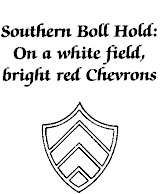
A Hold was established by Emily Boll and Pierre de Courcis to the south of Fort Hold amidst the tropical lushness of the peninsula, after Emily recovered from the injuries suffered in a shuttle crash during the ninth year of the colony. The stonecutters were employed to cut roads down to the chosen site and to help the holders start making their home habitable. It was called Southern at first, for its position south of Fort. After Governor Emily Boll's death in 33, the stakeholders decided to honor her by naming their home for her. They simply appended her name and called it Southern-Boll. After a brief time, the hyphen was dropped from use.
Pack animals travel the long, terraced road to Southern Boll. The road is good but steep in places, so travelers prefer not to try to maneuver wagons all the way south. The Hold has no port of its own, so traders call in at Hold Gar, two days ride to the north, for the many goods produced in Southern Boll.
Surrounded as it is on three sides by the cool end of the oceanic current, the Hold boasts hot, balmy weather in all seasons. Hats will not stay on in the constant wind, so those who live in Southern Boll tend toward veils, head scarves, and turbans. For those who do not mind the sun, muumuus, sarongs, bikinis, and daishikis are not uncommon wear; there is even the occasional grass skirt.
Boll also uses furniture made of twisted vines like wicker wound around metal supports. Instead of heavy padding, chairs are made with slings in light, flexible frames, or with caned backs and seats.
Southern Boll, Ista, and Nerat have very large populations, as do most tropical zones, where a person does not have to work hard merely to exist. Occasional occupation will help eke out a satisfactory living for a family that can gather most of what it needs to feed itself from the countryside. Telgar and Keroon also have a large indolent population in the southern reaches. Boll brings in a lot of fish, and the heavy jungle is full of fruit trees and wild melon vines. Soft fruits, like bananas, kiwi, and mangoes, are cultivated alongside goru pear, wedgenut, and peach trees. The more delicate cooking and medicinal herbs and hot-climate spices provide trade goods and season light dishes served in the heat of the day.
Some of the few remaining flocks of chickens live in the Hold. Southern Boll makes up for its isolation by having many goods for trade with the North that cannot be found in any other Hold.
Southern Boll also raises numerous herbs used to make tea. The Earth genus Camellia from which tea came did not survive, but tasty, stimulating, soothing substitutes were found among native herbs and blends of imported ones. Fruit liquors as well as grape wines are popular here, and many bottles are exported to other Holds for special occasions.
The Hold boasts the presence of the secondary Glasscrafthall. The Mastersmith, to whom Glassmaster Arkeli looks, lauds the high quality of the fine sands that line Southern Boll's beaches. Glassblowing and ceramics are taught here. Apprentice jars and bottles can be distinguished from those journeyman-made by the concentration of pale green tint, showing impurities in the glass. Well-blown glass is perfectly clear. Colored sand is sometimes used to produce tinted glass, as are certain metals, to create what Terrans refer to as cobalt, cranberry, and ruby glass. Carnival glass is made on occasion, as are leaded crystal and plate glass.

The original plate glass is still in the windows of the main Hold. One handsome window ringed with a stained-glass mosaic looks in upon the Lord Holder's chamber, spilling rainbows across the floor.
Southern Boll is full of color. The range of tropical trees and plants produces a riot of bright flowers and shoots. Even the products of the small Minecrafthold here are especially colorful. Ruby, all the varieties of garnet, green malachite, copper, and blue copper sul-fate come out of the mines in the mountains behind the Hold.
WEAVERCRAFTHALL
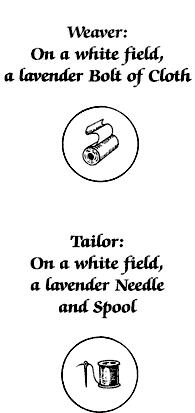
The presence of a major Crafthall has an effect on what crops are raised in the Hold. Unlike most Holds, in which food crops take almost absolute precedence over all others during a Pass, Southern Boll raises Earth flax and a Pernese fiber similar to it, sisal, and cotton to trade with the Weavercrafthall. The natural abundance of other food allows the holders to make the choice to grow a fiber crop. The Hall provides employment for a number of Southern Bolls men and women.
Flax produces an elegant, crisp cloth that stands up well Turn after Turn. Though it is difficult to make smooth, sisal, when beaten and pulped, makes a silky fabric easy to print or dye that is light enough to be worn in the hottest weather. It can also be woven into nearly invisible sheers. But it is cotton which is in the greatest demand and which is in the shortest supply by the end of every Pass. Cotton, for its tremendous flexibility, is a luxury fiber on Pern. Cotton seed lasts nearly forever in dry climates. The plant likes sand-and-clay soil, so Southern Boll is a very good choice for a source.
The colonists kept cotton alive as a species because nothing served so well for wearing against the skin to soak up perspiration, and in layers for warmth. By the first Interval, every scrap of cotton they had with them was in shreds. They grew all they could during the Interval and kept up the custom of stockpiling it throughout the cycles. Silk quickly became a memory, for though the colonists' ova banks contained silkworms, the mulberry bushes that are the worms' only food were not viable on Pern.
The Weavercraft trades their goods with High Reaches, Lemos, Bitra, Nabol, and Igen for the long fleece from mountain ovines, as their own ovines, evolved for the warm climate, do not grow thick coats. High Reaches also provides them with llama hair. Holders frequently make use of drop-spindles or spinning wheels in the evening while listening to music or sharing a chat with friends. Part of a dragonrider's evening occupation might be spinning or weaving. Everyone who can is always making thread, as so much of it is needed. During the Intervals, the Masterweaver has a number of students from the Weyrs in his Hall. There are small looms in every Hall, Hold, and Weyr, either for hobby or serious employment. Cloth goods are useful in every occupation. Because the Weavercraft cannot possibly supply every Hold, each makes its own hand looms, crochet hooks, spindles, and shuttles.
Since the Weavercraft's goods are not perishable, tremendous stocks can be kept in dry caverns until called for. For every type of fiber, there are different wheels and looms: flax wheels, wool wheels, sisal wheels (very delicate), and cotton wheels of every size and strength, and looms from the very simple to the infinitely complex. As a spinner finishes drawing a spool of thread half as big and fully as heavy as himself, he passes it on to the dyers, who tint and dry it. The Weavercrafthall is famous for certain special dyes whose compositions are considered a deep, dark craft secret. Master Zurg's signature is evident in thread of rich golden, brilliant orange, or special purple hues. Most of the rainbow dyes come from shellfish found off the coast.
Once the thread is colored or bleached, it is either covered and stored or passed on to the weavers or knitters. Weavers receive training in making looms and devices for working yarn. A bit of cloth is reserved for very skilled Weavercraft artists who paint the dye directly onto cloth by hand, for one-of-a-kind lengths of fancy fabric.
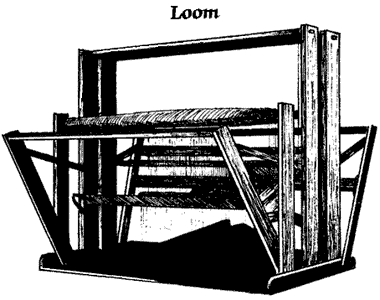
Some of the looms here can be used only by the most talented of weavers. A Master-weaver might make slubbed fabrics like velour, or cotton velvet, or brocades. The skill that produced the brocade looms used to make the famous Fort Hold brocades came from here. Flax, polished cotton, and metal-wrapped threads simulate Earth-made patterned fabrics of silk, examples of which are in the Weavercrafthall museum. Every large Hold has an upright tapestry loom or two, on which are made wall hangings and floor coverings to break up the endless gray of the stone walls.
As hardwood for shuttles and spindles was difficult to come by, the weavers first used plastic substitutes until the plastics wore out and the extrusion machines broke down. Then they turned to soapstone and agate, both light enough and easily smoothed into the right shapes.
The technology for building the equipment came to Pern with the colonists, who blended together two worlds worth of ancient home crafts. Patterns are simply copied over and over, with pieces being replaced as they wear out. Amerind standing looms, Swedish knitting belts, spindles, embroidery hoops, Centauri braiding trees, frames for slit-work tapestries—all have found favor at different times. The Craft patterns themselves have been passed down, too, from the minds of the dextrous and Craft-minded colonists and the data banks of the ships. Weaving, embroidery, and knitting, significant parts of many Earth cultures' identities, are now forged together as one. Afghans, granny circle blankets, flannels, burlap, and cambric are all the province of the Weavercrafthall. Silk-screening and dye patterns are recorded in the Hall's Archives for students to attempt to copy or to admire for their difficulty.
Decorative gloves are made of tatted lace, and even knit lace, made painstakingly from flax or cotton thread, but most everyday gloves are sewn of fine, soft fabrics woven from the neck fleece of young ovines.
The Weavercrafthall has an ongoing rivalry with the Tannercrafthall as the fashion enter on Pern. The Mastertailors evolve styles which the cognoscenti copy eagerly, but at which more conservative holders turn up their noses, and individualists ignore. What is “in” this season will be “out” again quickly enough. A native of Southern Boll, Masterweaver Zurg naturally favors the bright colors for which his home Hold is famous.
CROM HOLD
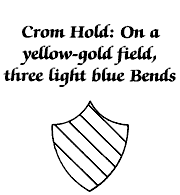
Crom was one of the seven holds held by the conqueror Fax. It is perhaps the only one he came by legitimately, through his marriage to Gemma, Lady of Crom, daughter of the old Lord Holder. She died giving birth to Jaxom, named Lord Holder of Ruatha by his father shortly before his death. Lord Nessel, the man who took the Hold after Fax was killed, had much to do to repair Crom's impoverished condition. Like High Reaches and Ruatha in Fax's day, Crom had a reputation for being a stronghold for bullyboys and mercenaries.
The principal Hold lies near a tumbling river that threads its way southwest along the Western Mountain Range. The fields that feed the Hold lie to the south. The window embrasures and door lintels are without ornamental carving, as if the Lord Holder who commissioned them did not wish to take advantage of the Minecrafthold's masons so nearby. Some say the Hold has changed little under Nessel's hand. He does coerce his holders to buy blackstone to heat their houses; the holders consider Cromcoal an unnecessary expense when the southern part of the Hold provides so much pine and softwood, which burns cleaner and is free for the chopping.
There is not enough grass to sustain many herdbeasts in the north mountain reaches. Crom raises mostly ovines for meat and trades with neighboring Telgar for river grains and bovines. With the onset of the cold season, numerous animals are slaughtered, and the remaining beasts are brought into sheltered pens to weather out the snows. The Lady Holder and her steward see to the salting and preservation of hides, fleece, and meat. Crom raises the hardier of the medicinal and cooking herbs, such as sage, all the mints, rue against fleas, cinquefoil for bowel problems, and mugwort for gout.
Crom is beholden to Telgar Weyr, with which it has little direct contact, especially during the hard winters. They are divided by a spur of the Central Mountain Range beyond the Mastersmithhall. Weyrleader R'mart keeps in contact mainly through the watchdragon posted on the fireheights.

MINECRAFTHALL
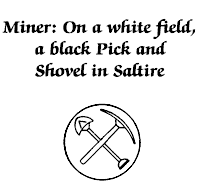
In Crom itself, the mines produce Firestone, blackstone (also called Cromcoal), and sapphires, all of which are handy to the much-respected Minecrafthall. Like the Farmcraft, with which it has an ongoing rivalry, the Minecraft has many minor halls all over Pern. The skill of the Masterminer must extend not only to the excavation and shaping of minerals, but also to the knowledge of ecology of the land. The Minecraft is considered to be solid, honest, and reliable, as well as discreet. Its influence on Pern is deliberately underplayed by Masterminer Nicat, who would rather get on with his job and leave bickering to those with less to do.
Complaints fostered by the Master-farmer, presently Andemon, usually have to do with disputed fields in which the Master-miner wants to dig and which the Farm-crafter wishes to plant. They each recognize the necessity for the other; without both of them, ecology would quickly break down, and life on Pern would be much less comfortable.
The Minecraft works hand in hand with the Smithcraft, for whom it digs ore and minerals in exchange for new and more efficient tools. Their functions frequently dovetail. Not only must the Masterminer be premier in his Craft, but he must also be able to coordinate with the Mastersmith. In effect, they are two halves of the same whole. The smith refines ore and puts it to its final uses. There are dozens of mines all over the planet, and Masterminer Nicat is in charge of them all.
He has in his service a huge number of harper journeymen who act as the communication system between him and his Master-miners. With the Harper Hall's aid, he keeps in close touch with what is happening in the world, both specific to his craft and of general interest. Nicat occasionally makes use of fire lizards as messengers, but he also uses the little dragon cousins in the mines for killing tunnel snakes and detecting gas leaks.
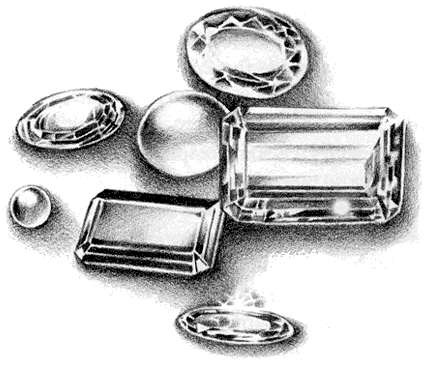
A miner may practice a specialty of his Craft. Some mine only gems, a science in itself. It takes a special skill to get the crystals out of matrix intact. Others seek liquid minerals, such as rock oil and natural gas, both useful to the Smithcraft. Geology and petrography are specialties of the Minecraft, though they are not known by those names. The minecraft also trains interested students in lapidary, spelunking, and mountain climbing, all of which require the study of the stress and structure of stone formations. The lapidary classes are especially popular in both Hold and Weyr. Gems have no specific value on Pern except as ornamentation and in limited functions within the Smithcraft. For example, the black diamonds found off the shore of Ista are not terribly sought after by amateur jewelers since they are not very pretty, but the stones make useful tools to the smiths.
Women in the Crafthall cut and polish stones to make their own jewelry, which they wear or barter freely. Agate and other pretty stones are traded around or given as gifts. Any stone that a man or woman considers attractive is used for making into a necklace or brooch. Most non-Craft students seek only to learn enough to polish the stones and to bore holes in them to put them on a necklace. The Smithcraft sells or barters tools for ladies to make jewelry, and sells some settings ready-made for the insertion of gems. Most stones come from the Minecraft, either in trade or as gifts.
Jewelry crafting employs shells, bone, and pretty bits of wood as well as cut and polished stones to make scrimshaw, pins, brooches, necklaces, and rings.
There are distinct regional tastes in Pernese jewelry. Pern has much the same range of precious and semiprecious stones as does Earth: the full range of colors of garnet and sapphire; tourmalines; agates of every kind including lace agate and moonstone; the full range of quartz crystals; and all the corun-dums, including beryl. Some untapped diamond pipes still exist in the Southern Hold in the Ninth Pass.
Far from being stagnant, the Minecraft seeks to expand its skills and to discover more of the Ancient knowledge that has been lost over thousands of Turns. Its many Halls Pernwide work to improve techniques and safety procedures in bringing out the ore efficiently.
GREENFIELDS
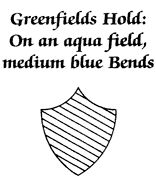
This huge farmcrafthold lies across the estuary on the same latitude as Nabol. Greenfields is a major grain producer and exporter. Its cliffhold caverns house only three hundred people, but many cotholds lie scattered in the fertile countryside around it.
TELGAR HOLD
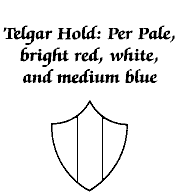
The Hold was named for Sallah Telgar, pilot of Admiral Paul Benden's ship Yokohama, who is believed to have suffered from the treachery of Avril Bitra and her associates, but historians from Bitra and Lemos bitterly dispute that interpretation.

This is the largest Hold in present-day Pern. The stone palisade in which it is situated looks like the prow of a ship, with one great flat face turned west and the other east, as is considered proper for a major hold. (All holds are expected to have an eastern face, to watch out for Thread.) From the Great Court, the Hold commands a tremendous vista of the valley to the south. A thousand people live in the Hold complex, and the Hold supports some fifteen thousand others in the immediate area.
Upon the gate are twin watchtowers overlooking the ramp down to the road. With all of the activities centered in Telgar, it is not unreasonable for the Steward to want to keep a close watch on the comings and goings.
Telgar is another Hold upon which the architects were able to spend time. The corridors in each of the seven levels (five of living quarters, one for the Lower Caverns and kitchens, and one for the Drum Heights) are fairly even, slagged smooth with the stonecutters. Each window is fitted with heavy bronze shutters.
A wide main entrance leads into the Great Hall. The hallway at the left rear of this huge, high chamber leads to the refectory, in which there are long rows of stone-topped tables and wooden-topped benches. In a storeroom just off the kitchen are even more tables and benches with their metal trestles, for use during the seasons of the year in which Telgars population swells. The Lord Holder's chambers are directly above the main entrance. They are most ornate, lined with colorful tapestries and objects d'art from every part of Pern. In Larad's study, there are large maps of his Holdings on the wall, with colored markers depicting where each type of crop and beast is raised.
Telgar is one of the wealthiest, if not the wealthiest, of the major Holds. It houses the prestigious Smithcraft; contrary to current belief, the Craft and not the Hold was the reason for settling this rich valley. The water-driven wheels that spin in the swift current of the Telgar River to the northeast of the Hold have curiously shaped parts which are older than anyone can remember. Other minor industrial Crafts have their home here as well. Farriers and blacksmiths are sent here from all over Pern to learn skills to take back home. Telgar is famous for its etching and engraving, and its skill at producing all types of printed fabric, silk screen, and batik. Until recently, the Woodcraft was here, but it was moved to Lemos, nearest the best supply of wood, after the Mastersmith and the Lord Holder of Lemos gave their approval.
The vast fields in Telgar produce most of the grain consumed throughout the north. And for those looking for a good pint, the best beer on Pern comes from Telgar, brewed from that very grain.
Much of a Hold's character comes from its Lord Holder. Lord Larad is young but considered to be strong, a fine organizer, and an amiable man. His holders and stewards value his simple approval more than copious words of praise from any other man.
Telgar often has some rough weather over the course of a Turn. The main Hold tends to get snowed in during the cold season, so it must be self-sufficient. It needs to care for more than its own permanent population, since traders and their families commonly winter over in Telgar, where they are welcomed by Larad, a willing host.
In the spring, the traders leave Telgar for their annual circuit of the Northern Continent. Most follow the traditional road, traveling west to Crom, Nabol, the High Reaches, Tillek, down to Southern Boll, up to Ruatha, then to Fort Hold, where they take ship for Ista. The traders debark in Nerat, travel north and west to Greystones and Valley Hold or Half Circle, and finally converge in Benden Hold. As the weather begins to turn cool, they follow the river road down into Keroon and Igen, and travel up the Great Dunto River back to Telgar before the weather traps them elsewhere.
Sea Traders begin their routes in Tillek or Fort Sea Hold and stop in at Ista, Big Bay, Igen, Keroon, and Nerat. Telgar sends its goods downriver to Big Bay by means of shore luggers, heavy haulers something like river barges; not very fast but very safe, the shore luggers can carry a considerable amount of goods.
As quarters are very cramped in the winter, Larad needs to keep a close eye on organization to prevent some of his temporary population from starting brawls out of boredom. The best harpers are in his employ to lead singing and provide entertainment. Some of the most complicated dances are devised in Telgar over the long winter season.
Telgar sends out patrols in the winter to make sure those living in small outlying holds are all right. In the mild spring and summer, itinerant harpers can bring the alarm back to Telgar if help
is needed in a small hold, but in winter the snow is usually too deep for a single man to make the circuit safely. The Telgar Weyrleader will lend a support system of Weyrlings if he is in a good
mood, and normally provides rescue riders in the case of an avalanche.
Besides the traders, Telgar also occasionally hosts other wanderers, some who pride themselves on their independence, and others who are merely eccentric.
A very rare talent is known as a “nose,” a person whose olfactory sense is so finely developed that he is able to determine the components of an aromatic solution, or to compile one. Such people are vital to the design and production of perfumes. A woman named Mariko wanders between Telgar and Ista throughout the Turn, gathering fragrant herbs and mosses. She started out in the Winecraft, but found she was more interested in scents than tastes and retired to pursue her own Craft.
She prefers to travel by herself, but lately she has been shadowed by a companion, a young woman who follows her, eager to learn Mariko's secrets. The old woman is too crafty for her young companion and eludes her when gathering certain ingredients for her inimitable perfumes. Mariko is not sure how she gets her results, and she is not ready to tell anyone her methods yet.
MEASUREMENT
| ||||||||||||||
|---|---|---|---|---|---|---|---|---|---|---|---|---|---|---|
Mariko blends the herbs into a base of rendered fat or pure alcohol saved for her by friends who remained in the Winecraft. With only a runnerbeast and a pack animal, she travels far in the warm seasons, compiling new perfumes and soothing herbals, which she barters in the cold seasons for food, shelter, and clothing.
Mariko is a throwback to the Japanese racial type, with wide cheekbones, a delicate nose and chin, and epicanthic folds. No one knows exactly how old she is. She is allowed to stay in the Smithcraft any time she appears, because Fandarel likes her, understanding her single-minded devotion to her Craft.
SMITHCRAFTHALL
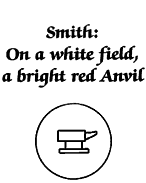
Fandarel represents the Smithcraft as only a man of his bulk and competence can. The endless search for efficiency makes the Smithcraft one of the most progressive of the crafts. Techniques are in constant flux with new technology to create the best and the fastest with the most sparing use of precious raw materials. Neatness counts.
The Smithcraft and the Minecraft work closely together. One supplies raw materials while the other supplies the tools with which the first can do its job.
The Crafthall was set up here, north of what came to be Telgar Hold, because of its proximity to the necessary ore and raw materials and to the Telgar River, which flows swiftly and deep down from the Northern Barrier Range all the way to the Big Bay. The earliest smiths set water-driven wheels in the Telgar to run their machinery. The great wheeled barges follow Telgars riverbank from the iron mines north of the Hold and continue their runs taking refined materials and finished goods down to the Sea Hold.
Processes that were lost to the colonists over the Turns are tackled with enthusiasm by journeymen and masters of this craft. The smith's motto is “If it has been done, it can be done again.” As equipment that the colonists brought with them wore out, facile minds in the Smithcraft had to find other ways of doing the same things.
Under Fandarel's direction, the Smithcraft has re-created distance viewers, invented the distance writer by combining litmus paper oscillographs with telegraphy, copied the Oldtimers' flamethrowers, and done chemical research that resulted in the use of agenothree (HNO3, nitric acid) as a combination Threadbane and airborne fertilizer. The smith's more ordinary occupations include overseeing his many Craftmasters, who are engaged in a variety of specialties.
The Smithcraft embraces a number of occupations. The masons who construct a building may come from the Minecraft, but the stress analyses of the stone and foundation are done by the Smithcraft. Some Masters concentrate on making tools and doing practical metalwork. The Craft makes cooking vessels of all sizes, some with a nonstick coating to ease cleanup. Other Master metalsmiths do fancy metal crafting, such as casting jewelry.
Journeymen work up to mastery in their choice of specialties, doing the uncomplicated and heavy work so the various masters are free to practice their skills. Apprentices may begin by sorting ore and working the bellows for metalsmiths, or extruding wire through wire plates for Master Fandarels distance-writer project.
Among the newest projects on which Fandarel is setting loose his brainstormers are some of the artifacts coming out of the caves around the Ancient Timers' Plateau. Disassembled machinery of all kinds has been found coated in grease or transparent hidelike material. Some of the machines use magnetics, which the Smithcraft understands. Some use nickel oxide batteries, which are similar in function if not appearance to the acid batteries and Leydenjars which the Smithcraft is currently using for metal plating and running the distance writer.
The Glasscraft and the Woodcraft are offshoots of the Smithcrafthall, each in its own building in the complex. Journeyman smiths interested in the Glasscraft will be immersed in work in everything from ceramics to lead crystal to porcelain. This branch practices glassblowing that ranges in complexity from flasks to bottles to windowpanes to lenses for the distance viewer and microscope. Wansor, the starsmith, came from this discipline, where he specialized in optics.
Woodcrafters begin with whittling and go on to working with chisel and saw, creating furniture, toys, jewelry, and a new invention, paper, from the slowly increasing supply of that precious commodity of wood. Smiths who have a knack for chemistry formulate stains, dyes, varnishes, and cleaning compounds in their own building, which is at far remove from the others. (Among the other compounds they create are explosives.) In these disciplines, the apprentices spend a great deal of their time washing pots and retorts, sifting sand, and sweeping.
A Smithcraft apprenticeship is one of the longest, but at its end the graduate journeyman is a practicing member of one of the most respected Crafts on Pern.
STARCRAFT
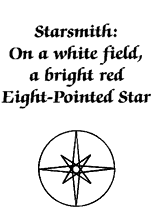
This is an offshoot of the Smithcraft, personified by Wansor. Wansor was a glass-smith who was assigned to study the new distance-viewer and small-seer that were brought back from Benden Weyr by Fandarel. He discovered the practical applications of the distance-viewer and began the important work of charting the skies around Pern. With his aid, Lord Jaxom and the Benden Weyrleaders were able to understand the maps found in the shuttle buried in the Ship Meadow. Wansor also trained the viewer on the Red Star. Studies of that wandering world are still ongoing, and little of use is yet known to drag-onriders, who would like to put an end to the menace of Thread at what they believe to be its source.

TELGAR WEYR
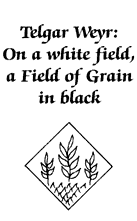
Telgar was one of the earliest Weyr sites chosen, but it was the last of the Ancient Weyrs to be occupied.
Tremendous ore deposits of iron, copper, lead, zinc, vanadium, and cola were found above the place where the Hold was founded. Rock oil was discovered, too, but its application were limited to industrial use. Also noticed was the broad cater, not unlike the once near the eastern shore of the Northern Continent and the one to the southwest near the great Fort cavern.
Because Telgar was a mininghold first, there was little need to protect the vegetation. What protection was needed was flown by the riders from Igen Weyr . It was easier for the miners and smiths if the mines had little to fear from a threat that could not eat stone, metal, or water. Gradually, ad the demand increased to expand farms to include the fertile fields below the Hold, the Weyr was established. Telgar quickly grew in prominence as a Hold rich in natural resources and good grain.
Telgar's Weyr Bowl lines in a huge volcano at the top of the Central Mountain Range just south of its junction with the Northern Barrier. It protects the woodlands of Lemos to its east and the
grainlands to the west.
This Weyr shamed itself during the Great plague by refusing to lend dragonriders to aid Moreta an the others who volunteered to carry serum to the runnerbeast Holds, which needed it to prevent a
second outbreak. Because of their insult to the Weyrwoman, she vowed to ignore them in their need and brought the serum herself to the parts of Keroon they would have covered, exhausting the
elderly queendragon carrying her and sending her
between forever.
The current Weyrleader enjoys a mutual respect with the Benden Weyrleaders. The show of unity at Lord Asgenar's wedding in Telgar Hold cemented the relationship between the Oldtimers and the modern dragonweyr.
SOUTH TELGAR HOLD
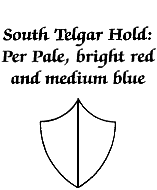
South Telgar lies at the same latitude as Igen Weyr. It is situated on the south bank of the river flowing west across the Telgar plain. The Hold was constructed especially for the denizens of Telgar who could not tolerate the hard winter weather in the main Hold. Many of the older folk come here when they retire from their duties in Telgar. The site was chosen for the Hold because a mineral spring bubbles to the surface not far from the bank of the river. The high limestone content makes the spring water spas naturally effervescent.
The daring soul who founded South Telgar broke with many Traditions (and common sense, some say) by constructing a stone complex in the shelter of the cliffs—not inside the cliff itself, which faces west. The main Hold faces east.
South Telgar has a Healer Hall almost as big as the main Hall in Fort Hold. It is in a separate building near the Hold. The Master-healer oversees a broad training program in pediatrics and geriatrics. Apprentice healers and nurses can begin their instruction here before taking their journeymen's examinations in Fort. The climate is warm enough to make use of the mineral springs all year round, for the relief of joint ailments suffered by many of the Hall's elderly patients.
ISTA HOLD

The name “Ista” is an acronym for the four families of colonists who settled the Big Island. The island seemed to be unlucky for those who claimed it as their stakehold: first Avril Bitra, then Nabhi Nabol, both of whom died before the Second Crossing. Those who came to stay on the island afterward kept its reputation in mind, but if Ista had once had any malice toward the settlers, it appeared to have been spent.
Joel Lilienkamp spent his last years here after the last of the mechanized transports wore out. One of his children helped establish Ista Weyr in the forty-second year of the colony.
Ista is well into the tropical zone. Its temperature throughout a Turn never goes below 55 degrees during the day, and is often very hot indeed. Like the people of Southern Boll, Istans sleep on hammocks instead of rope beds, and wear either many layers of thin fabric or very little at all, depending on how each person chooses to deal with the heat.
All the seagoing traders stop at Ista coming and going along their routes. Ista exports native fish and spider claws, fine handiwork, gems, and herbs. Fiber plants of all kinds grow huge here. Ista occasionally supplies Southern Boll with sisal. Healers come from the Healer Hall in Fort Hold to gather needlethorn. Mariko, the wandering “nose,” spends a few months every Turn here, purchasing essences from certain Ancient suppliers who claim they are even older than she— but they decline to say how old that is.
A past Lord Holder with a green thumb managed to propagate citrus trees in Ista. The fruit is popular, especially in the coldest Holds, where the juice is used to help stave off colds. The groves of orange, yellow, and green fruit with mottled rinds are a particular treasure of the Istan Lord Holders. Sweet-cane, the source of sweetening in the South as sweet-roots are in the north, is grown in Ista and Nerat. For those who like spicy dishes, the farmcrafters also raise endless varieties of peppers, ranging from very mild to dragon-fire.
Shell jewelry is popular here. Mother-of-pearl, scrimshaw, and cameos, not to mention strung lengths of tiny, pretty shells, are common adornments for both men and women. Ista is also known for the emeralds of a clear, deep blue-green that are still found occasionally in its mines. The official badge of a Lord Holder requires one of these marvelous emeralds, as a Craftmaster's makes use of a sapphire, which also can be found in Ista.
An intermittent crater peak that surfaces occasionally off the southwest coast of the island is believed to be the source of the black stone beach, which the local stonecutters from Ista's
Minecrafthold say is made up of granulated black diamonds. The Smithcrafthall in Telgar appreciates an occasional sack of the dust, which has numerous applications in toolmaking.
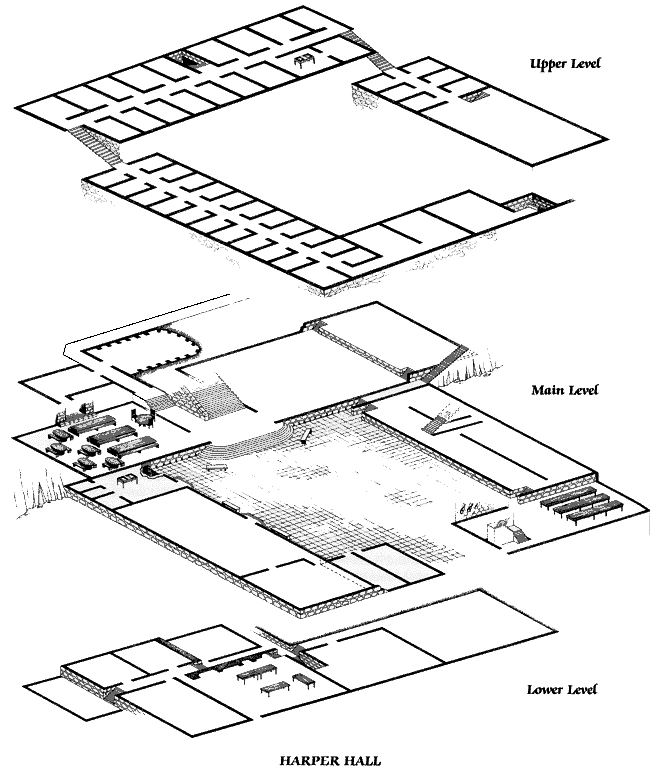
Ista is very well populated, though its people are spread out over a wide area. Ista island is very large. In every cove where there is access to the sea, a few hundred people live by taking what they need off the land, and by fishing. As all along Nerat and Southern Boll, the Istan coastline is dense with humanity. It is possible, in fact comfortable, to live in a thatched cottage during an interval. Holds in the tropics have more access to fruit, which they barter to other Holds for goods they need, especially in seasons when the harvests were bad elsewhere.
The Island is the site of the great harpers' enclave at Turnover Gather. One of the Lord Holders had a huge Harper Hall built in Ista for the sake of his Lady wife, a journeywoman harper with whom he fell in love. For her sake, he determined to make their Hall “the next center of the Harpercraft,” a rival center for music. Ista only has two or three harpers at a time, who rattle around like beans in the big, echoing, empty Hall. There is rarely need for more than a voice Master, an instrument Master, and their apprentices. In all its history, it was never packed to the brim until the idea was proposed to hold Turnover Gather in it.
For those from the temperate climate, celebrating Turnover in Ista is a treat. Because there is no need to sleep under a roof when Thread is not falling, Ista can host many more harpers and guests than almost any other Hold. The Gather has grown in size since its inception and is now a major event in the Northern Continent.
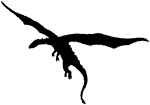
ISTA WEYR
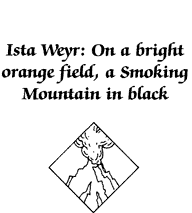
Ista, the fifth Weyr, is one of the most curiously constructed. Situated on the bay at the southwest corner of the Big Island, the black half volcano thrusts four fingers and a thumb into the tropical sky. The mountain must have been formed by an eruption that knocked the bay half of its caldera into the sea, letting lava flow in a gradual drop-off, which the pounding of the current has worn away into a plateau. For all its tiny size, Ista has a mind-boggling, mazelike warren of narrow tunnels that double back and run into one another.
Just offshore, a small mountain surfaces once in a while when there are earthshakes or upheaveals. The beach under Ista Weyr is sand that, when inspected, proves to be black diamond dust.
Ista supplements the lack of dragonrider weyrs with “forest weyrs,” cliffside dwellings on the outer face of the Bowl. It attained its full population shortly before the Second Pass in the year 258. Fresh water flows into the caverns from the northeast through underground streams. The corral where the herdbeasts graze has an artificial pool filled from pipes coming through the Weyr. With the sea so near at hand, there is no need for a bathing pool for dragons, though the dragonets who have not yet learned to fly like to bathe under the cataract of the artificial waterfall created by Ista Weyr's architects in the north wall of the Bowl.

The Old Time Weyrleader of Ista, D'ram, declared the mating flight of his junior queen Caylith open after the death of his Weyrwoman. The current Ista Weyrleader, G'dened, is a son of D'ram.
D'ram removed to Southern, where he drew attention to the handsome bay in which Cove Hold was later constructed. In time, he assumed the Weyrleadership at Southern, holding his own with Lord Toric. D'ram has shown interest in the archaeological excavations in the Landing plateau and elsewhere, lending the aid of his younger riders and dragons to dig and sort artifacts.
IGEN HOLD
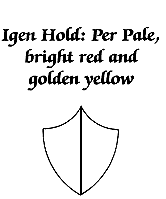
Igen Hold lies above the marshy flats on the eastern edge of the great desert that stretches all the way southwest to Keroon Bay. Igenites are hardy folk. Their chief items of trade are river grains (rice), ovines, runnerbeasts, and the opals and turquoises that the local Minecrafthall digs out of caves and gorges that were once seabed. Though they cannot compete with Lemos for the lushness of Lord Holder Asgenar's hardwood and fruitwood forests, Lord Laudey has taken advantage of the Weyrs' new attitude on wood and is allowing Igen's forests to burgeon.
Igen lies south of the imaginary line of demarcation between the temperate and tropical climate belts.
There are few holders in the bleak expanse of the desert, so most of the population is to be found along the coastlines. Those who have vast herds live with them to the northwest of the Hold in the grassy plains east of Igen Weyr, and the Hold's farmlands lie to the South along the river. The Hold itself overlooks a shelf of rock high above the Igen River, a broad, shallow, muddy stream that flows south dividing Igen from Keroon. Family holds are chiseled and chipped into the windswept cliff faces south of the Hold entrance. There are no cotholds at the foot of the Hold because the river tends to flood frequently, submerging the sandy, clay-based banks, and also because the natural caverns are large and plentiful. Igen has no fire-heights, but there is no green within dragon-lengths of the Hold or family dwellings. During the dry season, the thick red mud of the river is revealed, driving what is left of the shallow, fast-running stream into braided channels.

Because of the hot, dry climate, the holders adopt styles of dress unique to Igen. Burnoose robes are common, as are broad-brimmed hats, high-crowned to provide plenty of room to cool the scalp underneath during the long days. Under the wide hats protecting their faces from the sun, Igen women wear veils and snoods over their hair to keep out the dust. They favor bright colors and resemble fantastic insects in the shimmering landscape of the desert.
Other concessions to comfort include the use of the hammock. Rush bags and furs are too warm in any season, and are reserved for the sick—and for those from Holds hotter than Igen. Deep sandstone caverns under the Hold are filled with ice and snow brought in at night by dragons and stored in straw to keep food from spoiling. Food that will not keep any other way is dried and later reconstituted. Sorbets, ices, fools, and ice creams are special treats, and workers keep pitchers of cold drinks handy inside straw-padded boxes to prevent heat exhaustion.
Igen is a big trade center. Traders whose warehouses are in Big Bay, and the runner-beast breeders of Katz Field, find Igen a convenient jumping-off point for sending shipments on to Keroon, Nerat, Benden, and the rest of eastern Pern.
Gathers at Igen Hold would appear to be sleepy and dull during the day. Everyone moves slowly in the heat, and the dances are slow and graceful. At night, Igen awakens as the air begins to cool. The Gartner square is open to the sky only in the dancing square. The rest of ot is covered with sheltering cloth or hide canopies with tentlike sides that divide walkway from Gather stalls, and the stalls from each other. Folk take naps in the hottest part of the day, preparing for the lively evening. At dusk, the dances speed up, and conversation becomes lively.
Drinks are served in long tubes that "sweat", keeping the liquid inside them cool the way that botas do. Igen raises plenty of tropical fruit: melons, berries, rind-fruit, redfruit, and
genetically ltered descendants of pineapple and kiwi berries, two very juicy fruits popular with the holders.
Lord Laudey of Igen allows the Holdless folk to shelter without charge in the great cavern complexes near the Igen River, providing they break no laws or bother any holder. The wanderers suffer the greatest hardship during Threadfall. Those who were not rendered Holdless as a matter of justice for wrongdoing, but simply prefer the road under their feet to roof over their heads, are not welcome in Holds already crowded by those who have a right to be there. In many places, for the privilege of safety during a Fall, the Holdles may be cheated of their marks of forced to work many hours for mere shelter.
The Holdless are not necessarily a criminal element. Among the complement of passengers aboard the three colon ships were nearly a thousand men, women, and children from several tribes of Gypsies and other wanderers who once lived in many nations on Earth. The brands of thief and vandal were not applied to them when they awoke on Pern. Instead, it was the wanderers who were disconcerted. They were used to dong odd jobs and stealing to make their way, but on Pern, they found that they could ask for what they wanted; what the colony had was free to all. In present-day Pern, the difficulty most Pernese have with the wanderers has less to do with the old Gypsy reputation than with their acute discomfort that anyone would be willing to live without the security of a stone roof against the menace from the sky.
Most Holdless, however, are
not comfortable without access to shelter. Thus many frock to Igen, particularly when Threadfall is imminent. The vast system of caves echo with whispers from all over Pern. Information
of every kind finds its way eventually to the ears of the Holdless of Igen. It is available to any comer - for a price, which is more likely to be a favor than a mark.
TANNERCRAFTHALL

Handly to the central trade routes, the maim Tannercrafthall in Igen is able to stay on top of fashions and trends in boots and other leatherwear.
The main Hall teaches the basics of tannery to any interested student; fact, the Tannercraft has one of the most active Craft school for nonapprentices, since the needs and applications for cured hides are many. Most people have some knowledge of the basics, whether they learn them here or from the tanners back in their home Holds.
Apprentices cure all the hides they can in their own holds. Salt is used for curing when it is available. Curing done with creatures' brains produce glove-soft leather that is much prized for garments. The Crafthall is well downwind of the Hold, protecting the population from the natural effluence of smells that accompany the preservation of hides. Hanging from the rafters and beams are sheaves of drying thongs, and stretching racks hang or are propped against any unoccupied surface. Because of the noxious air, the bronze shutters of the many windows are flung wide most of the time. The stone floors are swept and scrubbed regularly, but scraps of leather and scattered drops of cure or dye are constantly underfoot.
The more sure-handed apprentices are expected to regrind knives and tools to the customary razor-edged sharpness as part of their duties. Every tanner's hands are covered with cuts and blots—the marks of his profession. The Mastertanner's own hands are a rainbow of dyes.
Every major Hold has a tanner-trained cobbler working full-time. He keeps lasts of everyone important to make shoes or boots in their size. Each Weyr has at least one tanner or hide specialist whose job it is to produce the leathers needed for riding gear.
The Tannercraftmaster is really not as important as many of the other Craftmasters. Like cooking, Winecraft, and masonry, tannery is considered a hold craft. The rougher work, such as the fashioning of harness, riding garments, and furniture covering, is easily learned and passed on. To maintain crafthold prestige, Mastertanner Belesdan has reserved as craft secrets some special processes and chemicals, techniques, and compounds to make finer leathers, such as glove and boot leather. He personally oversees the continuation of some Ancient techniques, which he keeps very secret. He considers it good business to have as barterable goods or services for trade some things that only the Tannercraft can provide.
Belesdan will often send specialists to various Holds known for their herdbeasts, to go through the hides that have accumulated over the winter. He provides certification of quality of hides for traders who will be carrying them to Gathers in Holds all over Pern in the course of a Turn. Buyers know that if a hide bears the stamp of the Tannerhall, it has been prepared properly and will not rot.
Since Pernese floors are all stone or earthen, the people need heavy shoes or boots to protect their feet from the cold, and they tend to be very gaudy in their footwear. Some of Master Belesdan's special dyes are intended solely for boot leather. He dabbles in color and experiments with new designs for his eager customers. Since leather is easily obtainable—almost more easily than cloth— fashion-minded folk will have many pairs of shoes. Leather gloves and caps also make fashion statements.
There is an ongoing rivalry between the Tannercraftmaster and Masterweaver Zurg in the Weavercrafthall in Southern Boll. Each is always trying to outdo the other in outrageousness and popularity.

IGEN WEYR
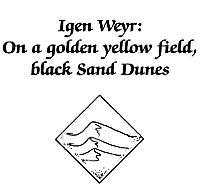
Igen is one of the smaller Weyrs, but at one time it had one of the largest territories to patrol. Founded after High Reaches Weyr in the First Interval, Igen Weyr protected the Keroon and Igen River Holds on the braided streams of the river and the inhabited lands around Telgar. Most of what lay between was desert or mountain. A small force could pursue Thread into those regions where it could do no more harm. As the population expanded eastward from Fort and westward from Benden, more protection was seen to be needed for the Second Pass.
The rim of the extinct volcano that houses Igen Weyr has been eroded into sharp and interesting patterns by the constant wind across the desert. As at the Hold, most of the activity takes place in the cool evening. During the day, even the lake acts like a mirror to reflect the merciless sun back in the eyes of bathers.
The Oldtimer who leads Igen is G'narish, a relatively young man. His support of Benden during the incident in which Wingleader F'nor was nearly killed over a belt knife, and afterward, when the dissident Oldtimers were banished to Southern, showed he was willing to change as Pern had changed over the four hundred Turns since his day. He was surprised but happy to be able to call on other Weyrs freely for assistance. His young energy is a good foil to the elderly Lord Holder Laudey.
BIG BAY HOLD
(IGEN SEA HOLD)
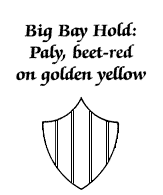
Big Bay Hold is a chief trading center for beasts and good of all kinds. It is a small sea hold that grew out of a cluster of storehouses built by traders in this sheltered cover in the curve of Igen's Claw. The dry air serves to keep goods from spoiling or mildewing.
Every trader has his own warehouse or beastfold, depending on the nature of his goods. Holder Jivan is an utterly fair man who keeps track of the comings and goings of beasts and goods on lengths of hide in his own shorthand, which no one else can read. He has copies of all the brands and hallmarks that the holders and crafters use, and adjudicates all disputes between traders in the calm voice that no one has ever heard him raise.
Adjuncts from every Crafthall live in Big Bay. Their job is quality control, to see that those products which are represented as being of a certain value and skill level are of that quality. The Beastcrafthall is the second largest on Pern, and several animal healers are in Jivan's employ.
Some disputes solve themselves when all the facts are brought out. If, for example, a trader claims that a herd of white-faced black bovines is his, but that it was moved in the night to another trader's fold, it is easy to check the manifests to discover the stops along both traders' routes to see which one of them was latest in northern Telgar, where that type of beast is raised. Dishonest traders get the word that they and their goods are no longer welcome to use the facilities of Big Bay Hold.
KATZ FIELD HOLD
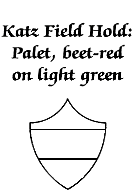
Katz Field is located in the tropical peninsula south of Igen. Its flat downs and fine grasses are perfect for racing, and this is the southern meeting place for runnerbeast races. With Keroon so close by across the bay, and the Telgar plain only two or three days easy ride to the north, Katz Field is lively during most seasons of the Turn. Racers are shipped from Fort and Ruatha to Big Bay Hold, which is only half a day's ride to the west of Katz Field, so all of western Pern can participate in the heats.
Katz Field is the chief testing point for distance runners. Its central location makes it a good place to hold prize fairs for farm-crafters during Intervals. They always hold hauling matches, plowing competitions, and tests to see which runnerbeasts can break and pull so much weight. Betting is rife during the long racing season, with always a promise for turnovers at the next meet. A man who wishes to lay a wager will either find his own action or look up the bet makers, distinguished only by their badges, which depict a crested blue avian. The badge is a rueful joke the bet makers crack on themselves. That avian, a native bird like the wherry, has a reputation for being a skillful thief.
KEROON HOLD

Named for Captain Ezra Keroon, master of the colony ship Buenos Aires, this is also the home Hold of Moreta, heroine of The Ballad of Moreta's Ride, a saga taught to all children as a part of their Traditional education. The miners uncovered quantities of iron, vanadium, copper, tin, and lead here—plenty for their colony's needs but not enough to have made the planet viable as a mining venture.
Most of the Hold is plains lands, and enormous herds of runnerbeasts and herdbeasts graze on the triangular-stemmed grassoids. This is a major marketing center for all of the breeds of herdbeast. Traders and breeders can take their purchases home on big, flat shore-huggers from the Sea Hold. Runners have been adapted to the long, sloping plains, and riders keep the numbers of little holds in Keroon in close touch. The Lord Holder, at present Corman, is the central authority in what is one of the five largest Holds in the North and one of the three most productive.
The land is grassy and nearly treeless, descending from hills to the warm, sandy beaches of Keroon Bay to the southwest and Nerat Bay to the southeast.
Keroon Hold itself lies in a mountainous outcropping just northeast of the tip of land that points south toward Igen's Toe. Moreta came from a small runnerbeast hold halfway down the river that flows into the Igen River from the Keroon Heights. In her day the Hold was more populous than it is now, and some of the cotholds have disappeared. The plague all but destroyed the economy of Keroon, as it did that of Ruatha.
The chief geographic feature of interest in this Hold is the Red Butte, an igneous, ridged lacolithic dome a hundred dragon-lengths (seventy-five-hundred feet) across at its widest point. This distinctive granite mound is an important landmark in Pernese history. It was the site of the historic meeting of the six Weyrleaders to decide how to combat the plague described in The Ballad of Moreta's Ride.
The Red Butte does serve a purpose, which is possibly why it was used as a meeting place by the Weyrs. It has been a flight-training point for Weyrlings throughout the ages. One of the very first
visualization points a young rider and dragon learn is the Red Butte. Once the pair can get here from
between, they can get almost anywhere else. It is a matter for celebration to know that a young dragonrider has reached and returned safely from the Red Butte in Keroon.
Even the smaller holds in Keroon have enough livestock herds to be considered medium-sized beastholds. Keroon specializes in bovines and porcines, important trade commodities. The terrain is excellent for bo-vines and the bigger grazers, as well as for the runnerbeasts. The compact, long-haired ovines are found right up into the lower ranges of the mountains that resemble those in Switzerland on Earth. Most northern Holds raise ovines for their all-around utility.
BEASTCRAFTHALL
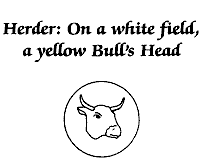
The Masterherder, who is usually a skilled veterinarian, covers all breed propagation. His craft is in charge of the care of stud beasts and breeding dams, and keeping track of the best bloodlines. His goal is to breed stronger animals suitable to their uses and locations. Mountain ovines and bovines are different from the types best off in fields and plains. He and his crafters keep stud beasts of each variety to breed stronger crosses in Holds that find their breeds are weakening.
Artificial insemination has survived as a skill from the earliest days of beastcrafting. The present-day Craftmasters do not know the source of their knowledge, but the process works and continues to work, so they continue to employ it. During the First and Second Passes, the veterinarians used embryo transplant as well, but those techniques are long lost.
Part of the Masterherder s job is to keep holders from producing monstrosities. The Beastcraft steps in to prevent runners from being overbred for size or strength, and instead encourages the
cultivation of appropriate breeds. A female racing runnerbeast will not easily produce a plow animal, as Lord Alessan of Ruatha discovered when he tried to breed hardy animals for carting that could
get along on little fodder. Heavy draft animals exist already for those jobs, and the Beastcraft would rather have encouraged trade than taxing the strain of one line to produce traits already present
in another. To Alessan s good fortune as a racing enthusiast, his combination did produce fleet sprint runners, as well as massive draft beasts. Unfortunately the plague caused many good bloodlines,
as well as knowledge and technique, to be lost forever.
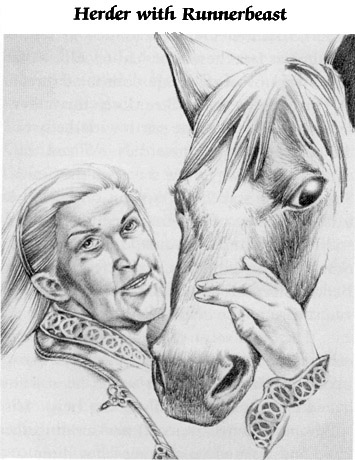
The Beastcrafthall has nothing to do with dragons, fire lizards, or watch-whers. Generally, a dragon healer from one of the Weyrs, such as Moreta, cares for one of these when need arises.
The beastcrafters are involved mainly with the study of the animals that once came from Earth: runnerbeasts, bovines, llamas, porcines, caprines, ovines, and canines. They also look after avians, domestic wherries, and the rare chickens and geese, improving egg yield and size of roasting fowl. Some journeymen make a particular study of tunnel snakes, not as they do of breeding stock, but more as an investigation of their habits so that holders may more easily rid themselves of these destructive and dangerous pests.
The Plague
Seamen from the ship Windloss out of Igen Sea Hold brought a curious beast they had discovered to the Beastcrafthall at Keroon for identification. The disease that the large spotted feline was carrying spread quickly through the beasthold, infecting runners that were later shipped to Southern Boll, Telgar, and the Gather at Ruatha. Four days later, the seamen brought the beast to the Gather at Ista, where it was destroyed. From those Holds the plague spread, unidentified and unchecked, until it decimated the Northern Continent.
Without any clues on how to treat the disease, healers were instructed instead to proceed empirically, treating the symptoms as they appeared: headache, fever, chills, a dry cough, and heart palpitations. Quarantine was declared, and an effort was made to trace the exposed beasts that had been shipped from Keroon.
The trick to surviving the plague was to avoid secondary infection, and the cure was within those who survived it. Uninfected people were immunized with a vaccine made from the blood serum of those who had had the plague and recovered.
But the solution was only temporary. The plague mutated and would have recurred if every human and beast who had been exposed was not inoculated a second time after the first dose of serum wore off. Many were near death from dehydration and starvation because they were too weak to care for themselves, even though they had lived through the first attack. Those people were the most likely to die of a second outbreak.
The Weyrs, led by Moreta, Weyrwoman at Fort Weyr, took it upon themselves to deliver the serum. Moreta's heroic efforts saved the lives of countless holders and run-nerbeasts at the cost of her own. Through The Ballad of Moreta's Ride, her story has lived on down the generations.

LEMOS HOLD
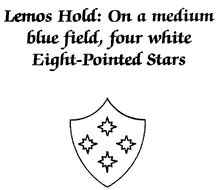
When the population of the Northern Continent grew outward from the two original Holds after the Second Crossing, Fort spread east and Benden spread west, Lemos was formed as an offshoot of Benden Hold. Stakeholders from the Southern Continent sailed north to Nerat from Seminole Hold and traveled on to Benden. Those who lived on lerne Island held out the longest in Southern, but at last they, too, had to admit that they were not safe from the combined threats of Thread and earthquakes. Even the tinkers and the Romanies came north with the last of the stakeholders because they realized they could not survive if they stayed in the South. Some of the stakeholders went on to Tillek for the privacy of its remote peninsula, and still others founded Lemos. The wanderers, now called the Holdless, stayed for a while in Benden, then moved on to the new Hold and vanished into the landscape.
The Hold was named for Bart Lemos, a miner who staked out the Yukon territory. Like Avril Bitra and Nabhi Nabol, he was believed by some to be an unsung hero. His children were instrumental in founding the Hold and insisted on naming it for him.

During the Intervals, the Lord Holders of Lemos experimented in forestry, knowing that once Thread fell again, the expanses of woodland would probably be sacrificed. To Lord Asgenar's delight, Weyrleader F'lar believed that wood could be an asset rather than otherwise, and helped the Lord Holder to preserve his precious hardwood stands. F'lar also played a strong role in persuading the Oldtimer Weyrleaders to appreciate trees for their commercial value rather than as nuisances.
Once the forests were considered safe, the Smithcraft approved Craftmaster Ben-darek's move to Lemos to establish the Woodcrafthall. Those Lord Holders who had no major Crafthalls in their Holds tried to block the move, partly out of jealousy and partly to keep Lemos from gaining a trading advantage, but as the crafts are autonomous from the Lord Holders, the Hall eventually came into being. Asgenar is deservedly proud of the honor of hosting the new Craft.
Lemos is one of the few places on Pern where one can learn how to make and use the longbow, a woodsman's weapon. It is used primarily for hunting wild wherries and other avians among the trees, where there is not enough room to use sling or bolo, two more favored weapons. On occasion, bows have been used for pursuing dangerous fugitives through the forests.
“Hard wood and hard stone, a way by which Lemos is known.” It makes the Hold sound inhospitable, but it is in fact a friendly, well-aspected place. The expression refers instead to Lemos's most
profitable exports. Lemos ships not only logs and boards to other Holds, but finished furniture and other wooden goods, which are shipped to Igen Sea Hold or Keroon for distribution. Their other chief
trading goods are fleeces and ovines from the upper Hold meadows, and jade. Lemos also has a small Winecrafthall, which make a decent table wine from its own grapes.
The Minecrafthall here has unearthed jade of all colors. The difficulty the wood-smiths have with working the mighty hardwoods looks like rush weaving next to the skill needed to carve jade. It is used for many purposes besides that of ornamentation. The translucent jade makes handsome jewelry, but the less attractive opaque jade serves when a smooth, very hard surface is needed. The Healercraft commissions mortars and pestles and plates for measuring powders or molding pills. Cooks who have a light hand for pastry seek to buy rolling pins, bowls, and boards made of jade, which can be chilled to keep delicate dough cool. Skilled carvers can even make belt buckles and liqueur decanters.
Jade is tough enough to take the place of metal in some applications in this ore-poor Hold. The stone is far harder than Lemos's copper, and easier to work than its bauxite.
WOODCRAFTHALL
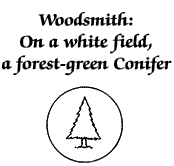
Wood has been in scant supply throughout the history of Pern. The only hardwood was brought by the original colonists; with Threadfall decimating the plant life fifty years out of two hundred and fifty, hardwood trees did not evolve. Except for the sky-broom, native Pernese trees are softwoods. Sky-brooms are giants, standing many dragonlengths high over the Lemosan forest. The abnormally tall trunks terminate in bushy crowns of tufted needles, much like the growth on Earth cedars. The wood of the sky-broom is dense and metal-hard, covered with a rough mat-like material protection from Threadfall. It is difficult to work, though it is much prized in the Woodcraft. Until the carefully fostered oak forests mature, sky-broom is the wood of choice for supporting the roofs of freestanding buildings.
Asgenar's father propagated the forests in Lemos Hold in an effort to bring up the supply of usable wood. He was fond of whittling and wood carving and understood the importance of the different types of trees, knowledge that he shared with his son. He and Asgenar permitted their holders to cut wood free to heat their homes during the long cold season. Pine, deal, and sponge-wood grew quickly, increasing the availability over the long Interval. Asgenar innovated the hardwood and fruitwood stands while still his father s heir, a little over five Turns ago. Unfortunately, these trees take a long time to mature, and he fears it will be many Turns before his investment pays off.
Wooden furniture, a mark of wealth elsewhere, is plentiful in Lemos. Popular items are upholstered chairs and settees, chairs made with wooden frameworks and leather slings, canopy beds, and pigeonhole desks. Styles vary widely, depending on the imagination and skill of the woodworker.
Lemos and Bitra also ship wood to the Harper Hall for instrument making, and to the Smithcraft for use as tool handles where a nonslip grip is required and hide will not serve. As F'lar explained to Lord Asgenar, wood is a flexible and important commodity, and the Pernese are just relearning its uses. The Crafthall also provides the wood blanks for marks and formulates varnishes and oils for the care of wood, as well as stains and dyes for tinting it. The Woodcraft is young and has a lot of potential into which it may expand.
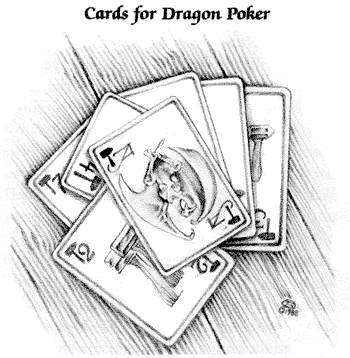
BITRA HOLD
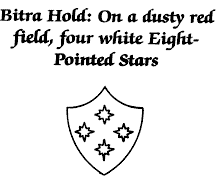
Bitra was named for Avril Bitra, an original colonist and the groups only experienced and qualified astrogator. She is believed to have been heroically martyred for the sake of the colonists of Pern when she single-handedly piloted a small ship with faulty controls head-on into the wandering planet, the colonists' name for the Red Star.
The original founders of Bitra left Benden Hold because of disagreements they had over Bitra's role in the foundation of Pern. Their view was that Admiral Benden and Governor Boll stood by to let Pern fall to the terrible menace while only Bitra and her colleagues tried to save it. Bitra was called the champion of the lost cause, who was failed not by her skills but by a sabotaged starship. In the end, despite the opposition, the Hold was named as a memorial to Avril Bitra.
Bitra was beholden to Benden Weyr and is responsible for tithing a third of the Weyr's support. During Intervals, most notably the recent Long Interval of 450 Turns, Bitra and Lemos Holds, urged by the powerful Lord Holder of Benden Hold, remained loyal to the Weyr. Situated as it is, nestled in its mountain valley in the far northeast corner of the Northern Continent, Bitra is the closest major Hold to the Weyr except for Benden Hold itself, ensuring that it has a constant reminder of its debt to dragonkind.
Bitra has a reputation among those who like to gamble for having the highest concentration of card manipulators and sharpers of Hold or Weyr on Pern. If anybody is looking for a cutthroat game of dragon poker or poly-dice, Bitra is the best place to look. With one another, Bitrans play mah-jongg and other games at which it is difficult or impossible to cheat, but outsiders are fair game for all Bitra s skills.
To be fair, they have also kept alive many other games of skill and strategy brought to Pern by the Ancient Timers, although a stranger had better make sure he knows all the rules before play begins. Tarok, chess, pinochle, chase board games, backgammon, go, and a hundred others are mentioned in the copious records kept by generations of Bitran Lord Holders.
Dragon porker cards
There are three suits of seventeen cards, with four face cards apiece: Ace to 13, Fl, F2, F3, F4. The ace of each suit is a large dragon in the color appropriate to the suit. Weyr suit has the gold queen on its ace, and its symbol is the dragon. Hold suit has the bronze, and its symbol is the sheaf. Craft suit has the brown, and uses the hammer. The traditional deck has a repeating pattern of intertwined blue and green dragons on the backs of the cards. The face cards of Sheaves are Lord Holder, Lady Holder, Steward, and holder. The face cards of Dragons are Weyrwoman, Weyrleader, Wingsecond, Weyrling. And the face cards of Hammers are Craftmaster, journeyman, apprentice, student. There are three Harper cards, of which none, one, two, or all three may be included in the game and act as wild cards or picture blanks as needed.
Certain cards have their own meanings. A hand containing all three elevens is bad luck. Legend says a man died suddenly while holding those cards. Whether he died as a result of having angered someone he cheated or of more natural causes is unrecorded. The thirteen of Hammers is called the Bakers' card. The five of the Dragons is known as the Clutch, for the five colors of dragons.
Designers of the decks find their work more popular if they paint the faces of the local Lord Holder, Craftmasters, and Weyrleaders on a dragon poker deck. The decks are good barter items at Gathers. A handsomely marked set may be worth more than four marks, depending on the level of artistic skill that went into its design. Cheap ones can be had for a good deal less.
It is often a matter of politics to see whose faces are on the most popular decks. Anyone wishing to sell a Present Pass deck by Journeyman Larin of the Weaverhall, a skilled artist, bearing the faces of Lessa, F'lar, and Wingsecond F'nor of Benden; Lord Jaxom of Ruatha; and Mastersmith Fandarel; with Harper cards Robinton, Sebell, and Menolly, will probably be able to ask and get whatever price he likes. But even the sharpers in Bitra cannot remember a single deck being designed with the face of Oldtimer Weyrwoman Mardra or Weyrleader T'ron. There is no market for them. Unpopular faces on face cards are considered to be unlucky.

GREYSTONES HOLD
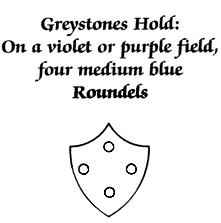
Greystones Hold is so named simply because of the gray stones found there. The Hold's predominant type of stone is a heavy granite with sparkling fragments of mica scattered throughout. It is popular as a building material in the Northern Continent and is transported by sea on the many trading vessels that ply their way along the east coast from Valley Hold southward around Nerat Tip, though few ships are equipped to take very many blocks at a time. If a Holder or Lord Holder is erecting a building using only Greystones granite, he had better be a patient man.
The stonemasonhall in Greystones is an offshoot of the Minecrafthall in Crom. As the granite is more plentiful here in Benden than anywhere else, apprentices in masonry are frequently sent here to
learn to quarry and work it. As a result, the Hold has more than its share of stone benches, tables, ornamental pillars, troughs, and unrecognizable apprentice carvings left behind by the minecrafters.
Many a beastfold wall near some of the stone cots is built out of the profusion of discarded carved blocks.
NERAT HOLD
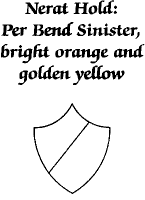
Nerat lies on the southern curve of the tail of the Northern Continent. Its fertile fields and thick forests support thousands of people up and down the coast.
The name Nerat came from the initials of its original settlers. Men and women from lerne Island others far from the earthquake epicenters in the Southern Continent came at last to Nerat, abandoning their stakeholds. Most of them continued north to Benden Hold, but some came back in the Interval to found Nerat Hold.
The land is fertile and the climate is warm, providing the best possible site for the Masterfarmhall. Saving the land for crops leaves less room for beastfolds. Nerat eats mostly fish, chickens, and wherries, and trades with other Holds for red meat. Free-range hen eggs provide another source of protein, and the calcium-rich shells make a high-quality fertilizer and mulch.
The presence of the Farmcrafthall means that Nerat has access to the most varied selection of high-quality fruits, vegetables, grain, and woods of any other Hold but Southern. Lord Holder Vincet has done much to protect a hardwood tree similar to teak. The stumpy trees have a broad central trunk well suited to hand-carving. Lord Vincet has a few carved statues of the teakwood on display in the Hold, which some stuffier Lord Holders consider blatant ostentation.
The Hold is surrounded by small cot-holds hewn out of rough rock lining the road from the dock. Nerat's wharf supports a busy fleet of fishing boats and trading vessels. All the buildings on the slope close to the wharf stand on pilings of stone like thick legs.
The Nerat seaholders like hearty Benden red wines and fruit liquors, which they distill themselves from the abundance of fruits and nuts growing around the Hold. Good wine grapes grow on ancient, carefully tended vines in arbors fenced to keep the herdbeasts out. It is not uncommon at Gathers to see competitions going on to judge who makes the finest brandies and liquors. Nerat also distinguishes itself by holding singing competitions at Turnover, based on an old seamen's custom. Nerat sends almost as many men to sea as High Reaches does.
A bamboolike grassoid that can be braided and twisted like wicker grows in plenty in the marshy land between Nerat Hold and the Tip. It is triangular in cross-section, like all of Pern's native plants. Much of the Hold's furniture is made from this light, surprisingly strong material, either woven in strips or cut in short lengths and bound together with dried vines that are tough yet flexible.

FARMCRAFTHALL
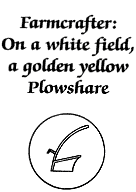
Masterfarmer Andemon looks like the epitome of the dour farmer. If a reproduction of Grant Wood's American Gothic had survived to this day, cynics might find in it a family resemblance to this Craftmaster.
Holders find Andemon difficult to get along with, but they have to admit that his advice is always sound. He is more inflexible in his relations with other people than with matters relating to his Craft. It was with his influence that F'lar was able to convince some of the Lord Holders that the grubs they had been destroying through the Turns were what saved the Southern Continent from Thread burrows. What convinced the Master-farmer that the grubs were not inimical to plant life was the fact that the plants grown in grub-enriched soil grew larger and stronger than the ones that did not. To him, that was reason enough to endorse their use.
Andemon is always seeking to make every acre of land count, and has journeymen out combing the land for the best of every kind of plant. The Farmcraft experiments with high-yield grains and superior vegetables. They also understand the importance of conservation of the soil, feeding it so it can continue to feed them. With so many humans and animals to feed and good land as scarce as it is, food propagation is a serious matter. The Holders who come for his advice may not like the way in which it is presented, but they cannot fault him on fact.
Like the Beastcraft, Tannercraft, Weaver-craft, and Bakercraft, the Farmcraft is the science for the average farmer. It provides the holder with the fruit of Turns of experience and the results of experiments to which the holder does not have to sacrifice precious dragonlengths of land.
The Farmcraft is aware of the uses of cross-pollination to produce larger and healthier root vegetables, sweeter redroots, or bigger tubers, and it understands the need for fertilization to keep the soil from becoming exhausted. The Masterfarmer himself takes on the task of negotiating with Nerat fishermen for fish heads and bones to enrich the soil. His journeymen travel through the farmlands advising small holders on matters of healthy soil, suggesting where to plant what for superior yield, and acting as arbiters on when to plant certain crops. Small cot-holders often refuse, as a matter of pride, to follow the journeymen's directions, but eventually common sense wins out. One problem that has never been solved is the difficulty the holders have with propagating broad roots.
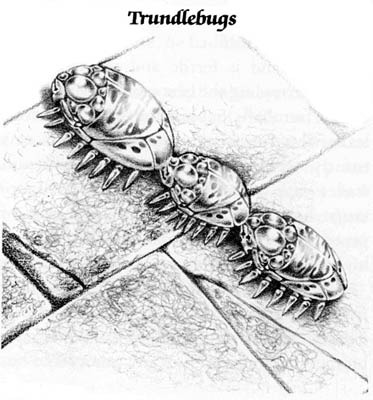
The bee was one species that did not survive the transition from Earth to Pern. Besides having to rely upon vegetable sweetening for cooking, the Pernese also had to make use of the pollinating insects that existed on the planet already. The chief pollinator is the trundlebug.
Trundlebugs cannot fly, but they live long and crawl far. Their bodies are round and black, and when they reproduce, the young trundlebugs attach themselves to the back of the mother like a chain of bobbles. When they grow to adulthood, they detach, and the females form their own chains.
There are several other flying insects that scatter pollen, so the Farmcraft has had to develop a substitute for plastic sheeting that allows a plant to develop without letting pollinators near them. One of the specialties that a journeyman can follow is that of a seedling or nursery master, crossing hybrids and keeping close watch on the results. Others go around and about Pern, gathering seeds, cuttings, and saplings, or raising experimental crops in remote patches.
HALF CIRCLE SEA HOLD
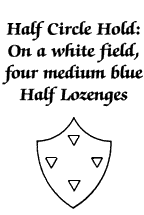
Half Circle Sea Hold, on the west side of the Nerat peninsula, houses 350 people in the Hold itself and in the family holds to the north along the cliff face. Half Circle gets its name from the shape of the cove in which it lies. Seen from above, the harbor is perfectly hemispheric.
A curious volcanic overhang provides a sheltered Docking Cavern into which tall ships can sail without taking down their masts, and in which the entire fishing fleet can dock. There is room on the deep shelf for dray carts to haul away the catch to the drying caverns or to build or repair fishing boats.
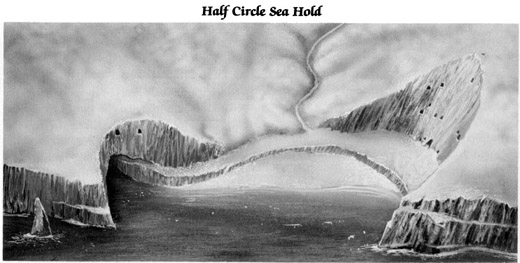
A causeway leading from the Docking Cavern to the Hold overlooks a curving sandy beach thirty dragonlengths long. The road that leads to the east from the center of the beach, and the palisade road toward the north, provide access for beachfront cliff dwellers to reach cropland where the seaholders grow grain, tubers, and fruit, and gather wild greens along the shore.
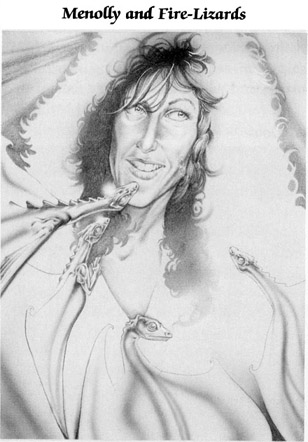
The Sea Hold is virtually isolated through most seasons of the Turn except during Gathers and when a ship docks or a party of traders comes through. Until recently, the Sea Holder had no exchange of fosterlings to draw Half Circle closer to any other Hold and to bring new ideas. The coming of the new journeyman harper, Elgion, preci-piated many changes that would prove beneficial to Half Circle, including preparing the Sea Holder for his daughter Menolly s new status as a journeywoman of the Harper Hall. Half Circle is an excellent example of a Hold s autonomy; it is so far from any other Hold that in times of Threadfall or other disaster, no one but a dragonrider could reach it with any speed. It must be completely self-sufficient to survive. But it need not be so isolated.
SOUTHERN HOLD
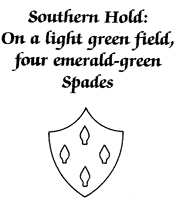
This province overlaps the ancient stakeholds of Cathay, Macedonia, Delta, and part of Dorado. The area that is now inhabited as Southern Hold was established by F'nor of Benden going back between times to ten years before the beginning of the Ninth Pass.
The Hold Cavern is along the eastern face of the sea cliff that shelters the harbor. Everyone in the Southern Continent learns to swim. Otherwise, it is impossible to stay cool unless one remains inside all the time.
The Hold has a sheer white stone face that is somewhat imposing from below. Those inside the caves can easily see approaching ships from a great distance. The Halfway Lookout is at the hairpin bend of the steep path leading up from the beach to the caverns.
Southerners live outside more than their counterparts do. The forested plateau above the cavern is thick with cotholds. Giant local native trees out of which harpers could easily cut a full-sized message drum are similar to Earth sequoias. The boles are formed of many triangular stems fused together into one massive trunk. They are inimical to fire but tend to rot out into hollow shells of trees, still with healthy leaves growing on the branches high above the forest floor. Bamboo grasses grow so swiftly that in the afternoon a kitchen auntie has to cut down stalks she planted in the morning, or they will be too tough to eat at dinner.
The tropical rain forest was invaded by wind-borne kernels from the maturing forests planted by the original settlers at Boca settlement, so there are as many Earth and Centauri plants as there are native Pernese flora on the high, flat plateau.
The Hold was established by the healers and Weyr support staff who accompanied the riders from Benden and the seaholders from Ista. Even after abandoning the project to raise more dragons in doubled time, ten Turns before the Ninth Pass began, the Southern Hold continued. Riders who were badly injured riding against Thread were usually sent to the healers at Southern to recuperate. After the duel between F'lar and T'ron, the Oldtimer dragonriders who did not wish to follow Benden's lead were exiled to the Southern Weyr.
A young Holder with a large family and a great deal of ambition, Toric of Ista took Hold in Southern over the turns. At first he was friendly to the Benden Weyrleaders, sneaking new holders in and information out, right under the Oldtimers' noses. But as he explored farther into the new continent and observed its size and richness, his character changed from one of bluff heartiness to one of closer cunning and greed. He demanded to be confirmed in his Holding of land bounded by the sea to the Western Barrier Range south of Drake's Lake, and ranging from the Great Bay in the west to the Black Rock River in the east, with more than a hundred families looking to him.
The Benden Weyrleaders had in the meantime learned the true extent of the continent and allowed Toric to think that he was duping them, all the while securing for themselves a larger, more lush expanse of the land than he had. Toric was confirmed as Lord Holder before he learned the truth about Southern's size.
Southern Hold broke many of the accepted traditions of the North. For example, instead of the rainbow sails that most Sea Holds use to declare their port of origin, Southern Sails are uninterrupted
spans of bright red. Southern imports wine and cloth and exports pelts, craft items, medicinal plants, and fruit. Plants in Southern grow bigger and healthier than any in the North.
As the Oldtimers decline and Benden's influence allows more and more holders to go south, more small holds are being established in Lord Toric's Hold. The new holders tend to be more independent because there is less need to rely upon dragonriders. The land is fully grubbed, and Toric only accepts men and women with sense and daring into the Hold. They have to be willing to fend for themselves, even in the most pressing emergencies, since the Oldtimers fly Threadfall only infrequently. Toric employed the traders to enlist younger sons of the Blood, who would otherwise be landless when their older brothers took Hold on the death of their Fathers.
Since it is easier to exist Holdless, southerners can explore and establish new Holds even during a Pass. More Holds have been built near the Great Delta south of the main hold and on the
island to the east. Independent hunters and trappers live in the jungle, bringing back any unusual animals they can catch or kill, and pelts to sell or trade at Gathers. The beastcrafters have a
difficult task determining what are sports and what are natural animals among the peculiar beasts found in the jungle.
Toric was excited by the reports of some strange ruins of a mine near the new Delta holding. The shafts piqued his curiosity because the beams used to shore them up appeared to be made of a substance harder than stone or metal, but light and showing no signs of rust.
He has been trying to get a Masterminer to investigate the ruins for him. Not just anyone will do. Toric wants a tamable or black-mailable man who will give him the findings without reporting them back to the Master-miner in the North. His demands that any discoveries of Ancient Timer artifacts be shared by all appears to apply only to others. Toric argues that Southern is his jurisdiction, but every miner he has approached has argued back that all matters having to do with mines are in Nicat's province. He fears that Nicat will bring the matter up in full Council before he has had a chance to learn all he can about the ruins.
Moreover, under the jungle vegetation in the land south of the Island Hold, there are numerous buildings, left over from ancient settlements that are smooth and melted together as if they had been formed of one piece. Something cut the stones perfectly square. Toric believes that they date from the Ancient days, but he will not reveal their discovery until he finds out how they were made. All explorers report privately to him, and he makes it worth their while to keep the news under wraps.
Farther south of his Hold, there are traces of other Ancient settlements. Most of the metal implements brought back are so badly corroded that no one can tell what they were, but there is the occasional find of a curious tool wrapped against the tropical weather in a clear envelope. Toric considers these artifacts of the Ancient Timers his reward for patience and good management of his Hold, and refuses to share them.
Toric was angry when Jaxom and Lessa uncovered the Plateau and the Ship Meadow, feeling that he should have reached those sites first.
SOUTHERN WEYR
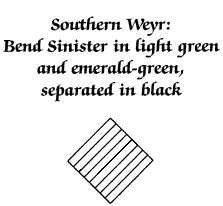
After twenty-four hundred years during which no one crossed back to the South, the dragonriders were surprised by their first view of the Southern Continent. The lush tropical forest, thicker than any in Southern Boll or Ista, was fruitful and healthy, exceeding the hopes of the Bendan Weyrleaders that it would be merely safe to live in. A grassy headland with a small freshwater lake that proved to be a plateau without exit suggested itself as an ideal Weyr, though without the usual cavern complex. The Hatching Grounds were situated in a small extinct volcano sloping down onto the beach between the main Weyr complex and the Hold. Plenty of rocky hollows would provide comfortable wallows for the dragons, who were not as upset to be sleeping in the open air as their riders were.

The Southern Weyr began as a desperate venture by the sole remaining Weyr on Pern to build up their numbers of dragons before the Pass began. T'bor and N'ton, bronze riders, and Kylara, Weyrwoman for Ramoths first daughter, Prideth, were sent down with F'nor to breed as many dragons as possible between times.
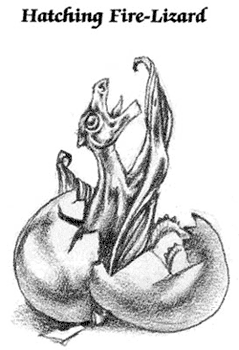
Because of Lessa's discovery of “timing it” four hundred Turns, and because of the effect such a long period being doubled up in time had on men and dragons, the Southern venture became obsolete, but the Weyr continued. The main Weyr and the west Weyr, honorary names for buildings and sand wallows instead of the volcanic homes to which the northern dragonriders were accustomed, became the infirmary for any rider who was badly injured. It was while convalescing here that F'nor, napping on the beach, rediscovered fire lizards and learned that they were Impressable.
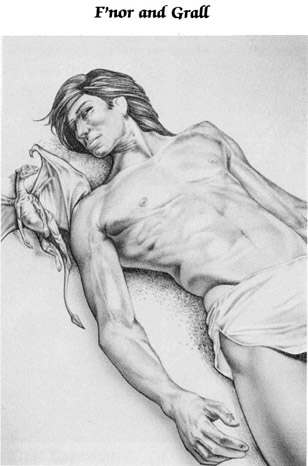
Southern Weyr changed leadership frequently, reflecting the political situation up north. First Kylara and T'bor were the Weyrleaders, then T'ron and Mardra after they were banished by F'lar from the North, and finally D'ram of Ista, who leads the Weyr alone, sadly waiting for most of the Oldtimers to die before requesting a Weyrwoman and queen from another Weyr.
The Southern holders, immune to most ravages of Threadfall in a thoroughly grubbed land and adequate stone buildings for protection, have a different attitude toward dragonriders than those in the North. They are used to protecting themselves by stowing beasts and humans under cover and flaming any remaining Thread with flamethrowers and agenothree. They do not need the dragons to fight for them. Nowhere else on Pern are the Weyrs considered expendable.
The Weyr's relationship with Hold and craft runs cyclically, depending on the phase of the Red Star. Before and during the early part of a Pass, Holders and craftsmen are so afraid of Threadfall that they will go so far as to bribe dragonriders to save them. Unscrupulous riders can extort nearly anything they want in this phase. As the Pass progresses, the three parts of the society fall into a mutual interdependence in which the Weyr is supplied by the other two groups it is protecting. When the Pass is near its end, the Weyr becomes the supplicant. While the dragonriders are still entitled to a tithe of the harvests and goods from each Hold and Hall, the immediate need for their services is ended.
It is this third part of the cycle that Lessa and F'lar of Benden are working on changing by opening up the eastern half of the Southern Continent as dragonrider land. In the Present Past there is still a need for dragons and riders to sear Thread from the skies, but once grubs arc established in the North, the Weyr's job will be limited. When that happens there will likely be new disillusionment with the concept of the Weyrs, and the dragonriders want to be prepared.
COVE HOLD
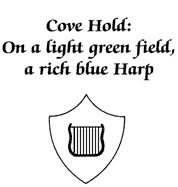
Cove Hold is the newest of the modern-day holds. It was discovered by Masterharper Robinton on a reconnaissance journey to the Southern Continent. He described it as “... the most beautiful place I've ever seen, a perfect semicircle of a white sanded beach, with this huge cone-shaped mountain far, far, in the distance, right in the center of the cove…” (The White Dragon). When he suffered a heart attack and made the decision to turn over the responsibility of the Harper Hall to Sebell, the Holds, Weyrs, and crafts chose to honor him by building a new, comfortable Hold where he could retire. The resultant building and grounds were designed, built, and furnished with love.

|
In only eleven days, hundreds of men and women constructed a Hold in the Southern fashion, suspended off the ground on pillars of black reef rock to allow cool air to pass below the floors. The corridor runs right through the building from end to end to act as a breezeway, and the sliding door that leads into the main hall is situated to form other breezeways, at crossing angles to the first, with the windows in the main hall and those in two of the guest rooms.
In order to prevent Master Robinton's concentration from being interrupted by the clatter of food preparation, the kitchen is at the far end of the Hold from the study. The entire building is surrounded by a wide veranda shaded by a wide, tiled roof. The house is designed for comfort. In addition, special gifts add to Master Robinton's pleasure: a wooden chair from Masterwoodsmith Bendarek made to the Masterharper's measure, a full set of the Traditional teaching tunes, and most important, a supply of Benden white wines. Robinton's favorite bubbly pies are always available in the kitchen.
Master Robinton's personal harp was a gift given to him by Harper Evarel and Weyr Harper C'gan on behalf of Hold and Weyr when Robinton, then journeyman, was made assistant to Evarel in Benden Hold. It is said to be there that he perfected his virtuosity in identifying Benden wines by taste alone.
The harp, crafted in the Harper Hall by Mastercraftsman Liesult, Master Sharmut, and Journeyman Joilin, was constructed of two layers of white honey-wood sandwiching a layer of the same wood dyed
harper blue, a deep, rich color associated with that craft. In the outer curve of the sound bow is carved a pattern of dragons in flight taken from the tapestry entitled
Threadfall Over Bitra, woven early in the last Interval by Masterweaver Wikvalen. The dragon pattern is repeated around the top and bottom rims of the pillar. The harp is otherwise unadorned.
The sounding board, which is rounded instead of squared, produces a mellow, almost introspective sound when the harp is played. The harp, like all of Master Robinton's personal instruments, resides
permanently in Cove Hold on the Southern Continent, but it may be lent to Instrument-Craftmaster Jerint for journeyman instruction in the crafting of lute-back style harps.
Cove Hold acts as a base of operations while the Ancient Timers' Plateau and the Ship Meadow are being excavated. The Masterharper s quiet retirement Hall became a center of activity when Lord Lytol left Ruatha for a fresh challenge, leaving Lord Jaxom and Lady Sharra to be confirmed in their rank. Lytol chose to act as administrator of the archaeological investigation, employing the talents of the Smithcraft, the Mine-craft, volunteer dragonriders from every Weyr, and workers from Southern Hold, all of whom are eager to help uncover the mysteries of Pern's past.
Cove Hold's peace and quiet are also broken by the arrival of the occasional traveler on his way to or from Southern Hold, or students from the Harper Hall who have come to learn techniques and tunes only Robinton can teach them. Dragonriders from Benden fly Threadfall over the Hold, and Robinton has a housekeeper to look after him, so his retirement is not a lonely one.
The Plateau was the site on which the shuttles landed. There is not much to find of Landing's original beauty in the present Pass, but it was once very handsome.
THE ANCIENT TIMERS' PLATEAU (LANDING)
Under the regular mounds preserved by the volcanic ash lie the hemispheric and half-cylindrical buildings that were set around squares instead of streets for a cozier neighborhood feel, not to mention more efficient use of space. It is clear from an aerial view that the mounds are not natural. Like the archaeologists who discovered the Incan and Mayan ruins buried deep in the Central American jungle, the curious Pernese investigators would not know where to look if they had not seen the site from above.
The buildings were intended to be functional but not beautiful. The engineers put them up quickly from extruded silicon- and carbon-based plastics and galvanized metal. They are not unlike Quonset huts. The roofs are half-dome shaped for most efficient distribution of heat.

When the earthquakes began, there was time to move out nearly all of the personal effects of those living in Landing. But some things were deliberately left behind, and were vacuum-sealed in the Catherine Caves all around the perimeter of the Plateau. One of the items that remained was the voice-activated computer, which was in a protected room in Landings main administration building. As the volcanic ash has preserved and protected it from time and dirt, it is very likely operational and needs only a voice to ask it questions—in the right language, of course.
The Dragonriders of Pern ® is a registered trademark.
